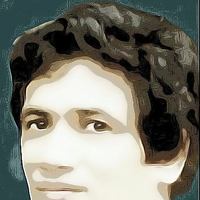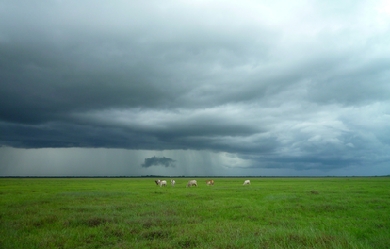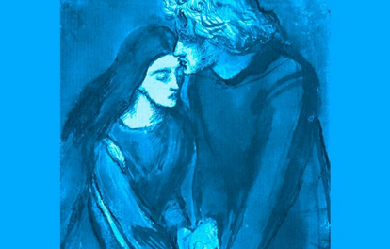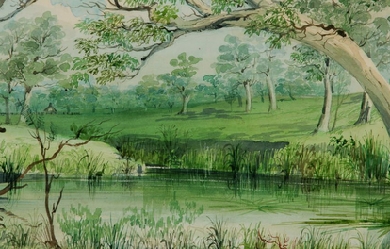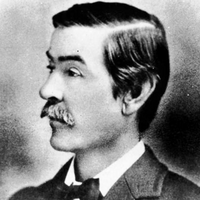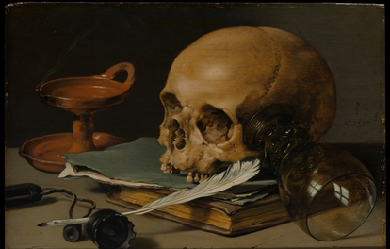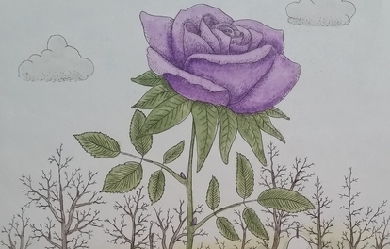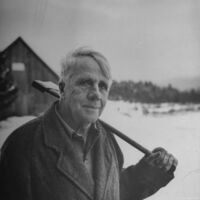
Robert Lee Frost (March 26, 1874 – January 29, 1963) was an American poet. His work was initially published in England before it was published in the United States. Known for his realistic depictions of rural life and his command of American colloquial speech, Frost frequently wrote about settings from rural life in New England in the early 20th century, using them to examine complex social and philosophical themes. Frequently honored during his lifetime, Frost is the only poet to receive four Pulitzer Prizes for Poetry. He became one of America’s rare “public literary figures, almost an artistic institution”. He was awarded the Congressional Gold Medal in 1960 for his poetic works. On July 22, 1961, Frost was named poet laureate of Vermont.
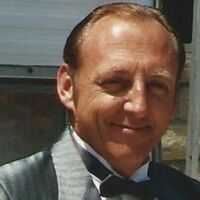
Worked in Manufacturing for 45 years. I am now a retired Tool&Die Maker. I am married with two grown children. I write poems, short stories, and some children's stories. I have published Poems in Quarterlies across the US in the 1980's, some awards and honorable mentions. My stories and some poems are now published on Booksie.com --- Author names = D. Thurmond --- & --- JE Falcon.
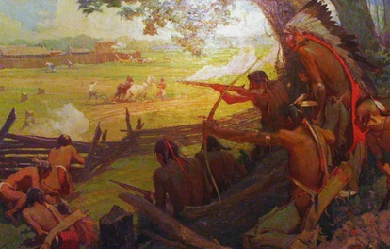
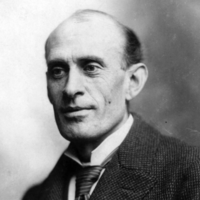
Eugene Field, Sr. (September 2, 1850 – November 4, 1895) was an American writer, best known for his children's poetry and humorous essays. Field was born in St. Louis, Missouri where today his boyhood home is open to the public as The Eugene Field House and St. Louis Toy Museum. After the death of his mother in 1856, he was raised by a cousin, Mary Field French, in Amherst, Massachusetts.
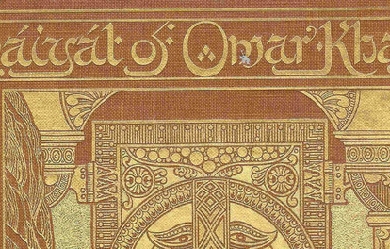
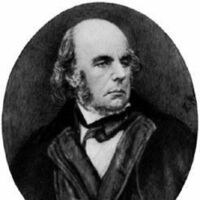
Edward FitzGerald (31 March 1809 – 14 June 1883) was an English poet and writer, best known as the poet of the first and most famous English translation of The Rubaiyat of Omar Khayyam. The spelling of his name as both FitzGerald and Fitzgerald is seen. The use here of FitzGerald conforms with that of his own publications, anthologies such as Quiller-Couch's Oxford Book of English Verse, and most reference books up through about the 1960s. Edward FitzGerald was born Edward Purcell at Bredfield House in Bredfield, around 2 miles north of Woodbridge, Suffolk, England in 1809. In 1818, his father, John Purcell, assumed the name and arms of his wife's family, the FitzGeralds. This name change occurred shortly after FitzGerald's mother inherited her second fortune. She had previously inherited over half a million pounds from an aunt, but in 1818, her father died and left her considerably more than that. The FitzGeralds were one of the wealthiest families in England. Edward FitzGerald later commented that all of his relatives were mad; further, that he was insane as well, but was at least aware of the fact... In 1816, the family moved to France, and lived in St Germain as well as Paris, but in 1818, after the aforementioned death of his maternal grandfather, the family had to return to England. In 1821, Edward was sent to school at Bury St Edmunds. In 1826, he went to Trinity College, Cambridge. He became acquainted with William Makepeace Thackeray and William Hepworth Thompson. Though he had many friends who were members of the Cambridge Apostles, most notably Alfred Tennyson, FitzGerald himself was never offered an invitation to this famous group. In 1830, FitzGerald left for Paris, but in 1831 was living in a farmhouse on the battlefield of Naseby. Needing no employment, FitzGerald moved to his native Suffolk where he lived quietly, never leaving the county for more than a week or two while he resided there. Until 1835, the FitzGeralds lived in Wherstead; from that year until 1853 the poet resided in Boulge, near Woodbridge. In 1860, he moved with his family to Farlingay Hall, where they stayed until, in 1873, they moved to the town of Woodbridge; thereafter until his death, FitzGerald resided at his own house close by, called Little Grange. During most of this time, FitzGerald was preoccupied with flowers, music, and literature. Friends like Tennyson and Thackeray had surpassed him in the field of literature, and for a long time FitzGerald showed no intention of emulating their literary success. In 1851, he published his first book, Euphranor, a Platonic dialogue, born of memories of the old happy life in Cambridge. This was followed in 1852 by the publication of Polonius, a collection of "saws and modern instances," some of them his own, the rest borrowed from the less familiar English classics. FitzGerald began the study of Spanish poetry in 1850 at Elmsett, followed by Persian literature at the University of Oxford with Professor Edward Byles Cowell in 1853. He married Lucy, the daughter of the Quaker poet Bernard Barton in Chichester on 4 November 1856, following a death bed promise to Bernard made in 1849 to look after her. The marriage was evidently a disaster, probably due to Edward's sexual leanings, for the couple separated after only a few months, despite having known each other for many years, including collaborating on a book about her father's works in 1849. Early literary work n 1853, FitzGerald issued Six Dramas of Calderon, freely translated. He now turned to Oriental studies, and in 1856 he anonymously published a version of the Sálamán and Absál of Jami in Miltonic verse. In March 1857, Cowell discovered a set of Persian quatrains by Omar Khayyám in the Asiatic Society library, Calcutta, and sent them to FitzGerald. At this time, the name with which he has been so closely identified first occurs in FitzGerald's correspondence—"Hafiz and Omar Khayyam ring like true metal." On 15 January 1859, a little anonymous pamphlet was published as The Rubaiyat of Omar Khayyam. In the world at large, and in the circle of FitzGerald's particular friends, the poem seems at first to have attracted no attention. The publisher allowed it to gravitate to the fourpenny or even (as he afterwards boasted) to the penny box on the bookstalls. But in 1861, Rossetti discovered it, and Swinburne and Lord Houghton quickly followed. The Rubaiyat slowly became famous, but it was not until 1868 that FitzGerald was encouraged to print a second and greatly revised edition. He had produced in 1865 a version of the Agamemnon, and two more plays from Calderón. In 1880–1881, he privately issued translations of the two Oedipus tragedies; his last publication was Readings in Crabbe, 1882. He left in manuscript a version of Attar of Nishapur's Mantic-Uttair. This last translation Fitzgerald called "A Bird's-Eye view of the Bird Parliament", whittling the Persian original (some 4500 lines) down to a much more manageable 1500 lines in English; some have called this translation a virtually unknown masterpiece. FitzGerald also translated Jami's Salaman o Absal ("Salaman and Absal"). From 1861 onwards, FitzGerald's greatest interest had been in the sea. In June 1863 he bought a yacht, "The Scandal", and in 1867 he became part-owner of a herring-lugger, the "Meum and Tuum". For some years, till 1871, he spent his summers "knocking about somewhere outside of Lowestoft." In this way, and among his books and flowers, FitzGerald grew old. He died in his sleep in 1883, and was buried at Boulge. He was, in his own words, "an idle fellow, but one whose friendships were more like loves." In 1885 his fame was increased by Tennyson's dedication of his Tiresias to FitzGerald's memory, in some reminiscent verses to "Old Fitz." Personal life Of FitzGerald as a man practically nothing was known until, in 1889, W. Aldis Wright, his close friend and literary executor, published his Letters and Literary Remains in three volumes. This was followed in 1895 by the Letters to Fanny Kemble. These letters reveal that FitzGerald was a witty, picturesque and sympathetic letterwriter. One of the most unobtrusive authors who ever lived, FitzGerald has, nevertheless, by the force of his extraordinary individuality, gradually influenced the whole face of English belles-lettres, in particular as it was manifested between 1890 and 1900. FitzGerald's emotional life was complex. He was extremely close to many of his friends; amongst them was William Browne, who was sixteen when he met FitzGerald. Browne's tragically early death due to a horse riding accident was a major catastrophe for FitzGerald. Later, FitzGerald became similarly close to a fisherman named Joseph Fletcher. As he grew older, FitzGerald grew more and more disenchanted with Christianity, and finally gave up attending church entirely. This drew the attention of the local pastor, who decided to pay a visit to the self-absenting FitzGerald. Reportedly, FitzGerald informed the pastor that his decision to absent himself from church services was the fruit of long and hard meditation. When the pastor protested, FitzGerald showed him to the door, and said, "Sir, you might have conceived that a man does not come to my years of life without thinking much of these things. I believe I may say that I have reflected [on] them fully as much as yourself. You need not repeat this visit." Rubáiyát of Khayyám Beginning in 1859, FitzGerald authorized four editions and had a fifth posthumous edition of his translation of the Rubáiyát of Omar Khayyám (Persian: رباعیات عمر خیام), of which three (the first, second, and fifth) differ significantly; the second and third are almost identical, as are the fourth and fifth. The first and fifth editions are almost equally reprinted and equally often anthologized. A Book of Verses underneath the Bough, A Jug of Wine, a Loaf of Bread—and Thou Beside me singing in the Wilderness— Oh, Wilderness were Paradise enow! Stanza XI above, from the fifth edition, differs from the corresponding stanza in the first edition, wherein it reads: "Here with a Loaf of Bread beneath the bough/A Flask of Wine, a Book of Verse—and Thou". Other differences are discernible. Stanza LXIX is more well known in its incarnation in the first edition: 'Tis all a Chequer-board of Nights and Days Where Destiny with Men for Pieces plays: Hither and thither moves, and mates, and slays, And one by one back in the Closet lays. The fifth edition is less familiar: "But helpless Pieces of the Game He plays/Upon this Chequer-board of Nights and Days". FitzGerald's translation of the Rubáiyát is notable for being a work to which allusions are both frequent and ubiquitous. It remains popular, but enjoyed its greatest popularity for a century following its publication, wherein it formed part of the wider English literary canon. One indicator of the popular status of the Rubáiyát is that, of the 101 stanzas in the poem's fifth edition, the Oxford Dictionary of Quotations (2nd edition) quotes no less than 43 entire stanzas in full, in addition to many individual lines and couplets. Stanza LI, also well-known, runs: The Moving Finger writes; and, having writ, Moves on; nor all your Piety nor Wit Shall lure it back to cancel half a Line, Nor all your Tears wash out a Word of it. Lines and phrases from the poem have been used as the titles of many literary works, amongst them Nevil Shute's The Chequer Board, James Michener's The Fires of Spring and Agatha Christie's The Moving Finger; Eugene O'Neill's Ah, Wilderness alludes to the Rubáiyát without being a direct quotation. Allusions to it are frequent in the short stories of O. Henry; Saki's nom-de-plume makes reference to it. The popular 1925 song A Cup of Coffee, A Sandwich, and You, by Billy Rose and Al Dubin, makes reference to the first of the stanzas quoted above. Quotations "If you can prove to me that one miracle took place, I will believe he is a just God who damned us all because a woman ate an apple." "Science unrolls a greater epic than the Iliad. The present day teems with new discoveries in Fact, which are greater, as regards the soul and prospect of men, than all the disquisitions and quiddities of the Schoolmen. A few fossil bones in clay and limestone have opened a greater vista back into time than the Indian imagination ventured upon for its gods. This vision of Time must not only wither the poet's hope of immortality, it is in itself more wonderful than all the conceptions of Dante and Milton." "Leave well–even 'pretty well'–alone: that is what I learn as I get old." "I am all for the short and merry life." Epitaph References Wikipedia - http://en.wikipedia.org/wiki/Edward_FitzGerald_(poet)

Hey everyone!!!:) My name is crystal R. Things about me...:) . Varsity cheerleader at my high school . Short .Loud .shy .competitive .nice . sometimes funny .Favorite subject is math .Favorite colors are baby blue and pink Sports I played/play....:) . Basketball .Track .Volley ball .cheerleading My writing....:) . I only write poems . About love, life, friends, struggles, just basically anything . Started writing in 4th grade then I stopped then started writing again in 7th grade .I write because it's a good way to express myself. Oh, and to anyone who follows me, read my stuff, or comment on anything of mine, I wanna say thank you:) And please if you read my stuff to please comment:) And I know I'm not the best writer but please comment:) Thanks:) And if you have any questions about me or anything feel free to message me:)
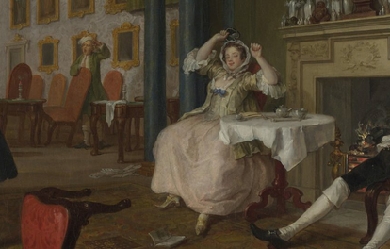
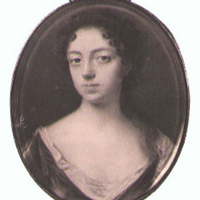
Anne Finch (née Kingsmill), Countess of Winchilsea (April 1661– 5 August 1720), was an English poet, the third child of Sir William Kingsmill of Sydmonton Court and his wife, Anne Haslewood. She was well-educated as her family believed in good education for girls as well as for boys. In 1682, Anne Kingsmill went to St James’s Palace to become a maid of honour to Mary of Modena (wife of James, Duke of York, who later became King James II). There she met the courtier Heneage Finch whom she married on 15 May 1684. It was a happy marriage and Anne wrote several love poems to her husband, most famous perhaps A Letter to Dafnis, though her most well-known works speak on her bouts of depression and her fervent belief in social justice for women. Finch’s works often express a desire for respect as a female poet, lamenting her difficult position as a woman in the literary establishment and the court, while writing of an intense artistic impulse to write despite the difficulties. On 4 August 1712, Charles Finch, 4th Earl of Winchilsea, died childless. This made Anne’s husband, his uncle, the 5th Earl of Winchilsea, and Anne, the Countess of Winchilsea. She died in Westminster in 1720 and was buried at her home at Eastwell, Kent. Works * Did I, my lines intend for public view, How many censures, would their faults pursue, Some would, because such words they do affect, Cry they’re insipid, empty, and uncorrect. And many have attained, dull and untaught, The name of wit only by finding fault. True judges might condemn their want of wit, * And all might say, they’re by a woman writ…" (Finch, The Introduction) * With these lines, written in the poem The Introduction by Anne Finch, Countess of Winchilsea, readers are welcomed into a vibrant, emotional, and opinionated style. They are unapologetically let in on the distinctly female voice that is to come. Melancholy, full of wit, and socially conscious, Anne Finch wrote verse and dramatic literature with a talent that has caused her works to not only survive, but to flourish in an impressive poetic legacy throughout the centuries since her death. * Finch’s range as a writer was vast. She experimented with the poetic traditions of her day, often straying from the fold through her use of rhyme, meter and content, which ranged from the simplistic to the metaphysical. Additionally, Finch wrote several satiric vignettes modelled after the short tales of French fabulist Jean de La Fontaine. She mocked La Fontaine’s fables, offering social criticism through biting sarcasm. Finch’s more melancholy fare, however, gained her wider acclaim. Her famous poems in this sullen vein include A Nocturnal Reverie and Ardelia to Melancholy, both depicting severe depression. Her poetry is often considered to fall in the category of Augustan, reflecting upon nature and finding both an emotional and religious relationship to it in her verse. Finch also skilfully employed the Pindaric ode, exploring complex and irregular structures and rhyme schemes. Her most famous example of this technique is in The Spleen (1709), a poetic expression of depression and its effects: * What art thou, Spleen, which ev’ry thing dost ape? * Thou Proteus to abused mankind, Who never yet thy real cause could find, Or fix thee to remain in one continued shape. Still varying thy perplexing form, Now a Dead Sea thou’lt represent, A calm of stupid discontent, Then, dashing on the rocks wilt rage into a storm. Trembling sometimes thou dost appear, * Dissolved into a panic fear… (Finch, The Spleen) * This poem was first published anonymously, though it went on to become one of her most renowned pieces. As Virginia Woolf, a later proponent of intellectual investigation into Finch’s life and work, once famously wrote, “I would venture to guess that Anon, who wrote so many poems without signing them, was often a woman” (Woolf, A Room of One’s Own). * Anne Finch is known today as one of the most versatile and gifted poets (one of her poems was set to music by Purcell) of her generation. Biography * (The following essay is taken from the Biography Reference Center.) * As a poet, Finch attained a modest amount of notoriety during her lifetime, which spanned the late 17th and early 18th centuries. However, her large body of work, written during the Augustan period (approximately 1660–1760), would earn greater attention after her death. While Finch also authored fables and plays, today she is best known for her poetry: lyric poetry, odes, love poetry and prose poetry. Later literary critics recognised the diversity of her poetic output as well as its personal and intimate style. * In her works Finch drew upon her own observations and experiences, demonstrating an insightful awareness of the social mores and political climate of her era. But she also artfully recorded her private thoughts, which could be joyful or despairing, playful or despondent. The poems also revealed her highly developed spiritual side. * Finch was born Anne Kingsmill in April 1661 in Sydmonton, Hampshire, located in the southern part of England. Her parents were Sir William Kingsmill and Anne Haslewood. She was the youngest of three children. Her siblings included William and Bridget Kingsmill. * The young Anne never knew her father, as he died only five months after she was born. In his will, he specified that his daughters receive financial support equal to that of their brother for their education. Her mother remarried in 1662, to Sir Thomas Ogle, and later bore Anne Kingsmill’s half-sister, Dorothy Ogle. Anne would remain close to Dorothy for most of their lives. * Finch’s mother died in 1664. Shortly before her death she wrote a will giving control of her estate to her second husband. The will was successfully challenged in a Court of Chancery by Anne Kingsmill’s uncle, William Haslewood. Subsequently, Anne and Bridget Kingsmill lived with their grandmother, Lady Kingsmill, in Charing Cross, London, while their brother lived with his uncle William Haslewood. * In 1670 Lady Kingsmill filed her own Court of Chancery suit, demanding from William Haslewood a share in the educational and support monies for Anne and Bridget. The court split custody and financial support between Haslewood and Lady Kingsmill. When Lady Kingsmill died in 1672, Anne and Bridget rejoined their brother to be raised by Haslewood. The sisters received a comprehensive and progressive education, something that was uncommon for females at the time, and Anne Kingsmill learned about Greek and Roman mythology, the Bible, French and Italian languages, history, poetry, and drama. At the court of Charles II * The sisters remained in the Haslewood household until their uncle’s death in 1682. 21 years old at the time, Anne Kingsmill then went to live at St James’s Palace, joining the court of Charles II. She became one of six maids of honour to Mary of Modena, who was the wife of James, Duke of York, who would later become King James II. * Apparently Anne’s interest in poetry began at the palace, and she started writing her own verse. Her friends included Sarah Churchill and Anne Killigrew, two other maids of honour who also shared poetic interests. However, when Anne Kingsmill witnessed the derision within the court that greeted Killigrew’s poetic efforts (poetry was not a pursuit considered suitable for women), she decided to keep her own writing attempts to herself and her close friends. She remained secretive about her poetry until much later in her life, when she was encouraged to publish under her own name. * While residing at court, Anne Kingsmill also met Colonel Heneage Finch, the man who would become her husband. A courtier as well as a soldier, Colonel Finch had been appointed Groom of the Bedchamber to James, Duke of York, in 1683. His family had strong Royalist connections, as well as a pronounced loyalty to the Stuart dynasty, and his grandmother had become Countess of Winchilsea in 1628. Finch met Kingsmill and fell in love with her, but she at first resisted his romantic overtures. However, Finch proved a persistent suitor and the couple was finally married on 15 May 1684. * Upon her marriage, Anne Finch resigned her court position, but her husband retained his own appointment and would serve in various government positions. As such, the couple remained involved in court life. During the 1685 coronation of James II, Heneage Finch carried the canopy of the Queen, Mary of Modena, who had specifically requested his service. * The couple’s marriage proved to be enduring and happy, in part due to the aspects of equality in their partnership. Indeed, part of the development of her poetic skills was brought about by expressing her joy in her love for her husband and the positive effects of his lack of patriarchal impingement on her artistic development. These early works, many written to her husband (such as "A Letter to Dafnis: April 2d 1685"), celebrated their relationship and ardent intimacy. In expressing herself in such a fashion, Anne Finch quietly defied contemporary social conventions. In other early works she aimed a satiric disapproval at prevailing misogynistic attitudes. Still, her husband strongly supported her writing activities. * Despite their court connections, Anne and Heneage Finch led a rather sedate life. At first they lived in Westminster; then, as Heneage Finch became more involved in public affairs, they moved to London. His involvement had increased when James II took the throne in 1685. The couple demonstrated great loyalty to the king in what turned out to be a brief reign. Refusal to take Oath of Allegiance to King William * James II was deposed in 1688 during the “Bloodless Revolution”. During his short reign, James fell under intense criticism for his autocratic manner of rule. Eventually he fled England for exile in Saint-Germain, France. As a result, the British Parliament offered William of Orange the English crown. When the new monarchs, William and Mary, assumed the throne, oaths of allegiance became a requirement for both the public and the clergy. William and Mary were Protestants, and the Finches remained loyal to the Catholic Stuart court, refusing to take the oath. They also viewed their oaths to the previous monarchy as morally binding and constant. But such a stance invited trouble. Heneage Finch lost his government position and retreated from public life. As the loss of his position entailed a loss of income, the Finches were forced to live with friends in London for a period. However, while living in the city the couple faced harassment, fines and potential imprisonment. * In April 1690 Heneage Finch was arrested and charged with Jacobitism for attempting to join the exiled James II in France. It was a difficult time for Jacobites and Nonjurors (those who had refused to take the oath of allegiance, such as the Finches), as their arrests and punishments were abusive. Because of his arrest, Heneage and Anne Finch remained separated from April until November of that year. Understandably, the circumstances caused the couple a great deal of emotional turmoil. Living with friends in Kent while her husband prepared his defence in London, Anne Finch often succumbed to bouts of depression, something that afflicted her for most of her adult life. The poems that she wrote during this period, such as “Ardelia to Melancholy”, reflected her mental state. Other poems involved political themes. But all of her work was noticeably less playful and joyous than her earlier output. Move to country estate * After Heneage Finch was released and his case dismissed, his nephew Charles Finch, the fourth Earl of Winchelsea, invited the couple to permanently move into the family’s Eastwell Park, Kent, estate. The Finches took up residence in late 1690 and found peace and security on the beautiful estate, where they would live for more than 25 years in the quiet countryside. * For Anne Finch, the estate provided a fertile and supportive environment for her literary efforts. Charles Finch was a patron of the arts and, along with Heneage Finch, he encouraged Anne’s writing. Her husband’s support was practical. He began collecting a portfolio of her 56 poems, writing them out by hand and making corrective changes. One significant change involved Anne’s pen name, which Heneage changed from “Areta” to “Ardelia”. * The peace and seclusion at Eastwell fostered the development of Finch’s poetry, and the retirement in the country provided her with her most productive writing period. Her work revealed her growing knowledge of contemporary poetic conventions, and the themes she addressed included metaphysics, the beauty of nature (as expressed in “A Nocturnal Reverie”), and the value of friendship (as in “The Petition for an Absolute Retreat”). Return to public life * By the early 18th century the political climate in England had generally improved for the Finches. King William died in 1702, and his death was followed by the succession to the throne of Queen Anne, the daughter of James II, who had died in 1701. With these developments, the Finches felt ready to embrace a more public lifestyle. Heneage Finch ran for a parliamentary seat three times (in 1701, 1705, and 1710), but was never elected. Still, the Finches felt the time was right to leave the seclusion of the country life and move into a house in London. * In London, Anne Finch was encouraged to publish her poetry under her own name. Earlier, in 1691, she had anonymously published some of her poetry. In 1701 she published “The Spleen” anonymously. This well-received reflection on depression would prove to be the most popular of her poems in her lifetime. When the Finches returned to London, Anne acquired some important and influential friends, including renowned writers such as Jonathan Swift and Alexander Pope, who encouraged her to write and publish much more openly. * She was reluctant, as she felt the current social and political climate remained oppressive as far as women were concerned. (In her poem “The Introduction,” which was privately circulated, she reflected on contemporary attitudes toward female poets.) When she published Miscellany Poems, on Several Occasions in 1713, the cover page of the first printing indicated that the collected works (which included 86 poems as well as a play) were “Written by a Lady.” However, on subsequent printings, Finch (as Anne, Countess of Winchilsea) received credit as the author. Lady Winchilsea * Anne Finch became Countess of Winchilsea upon the sudden and unexpected death of Charles Finch on 4 August 1712. As Charles Finch had no children, his uncle Heneage Finch (died 1726) became the Earl of Winchilsea, making Anne the Countess. However, the titles came with a cost. The Finches had to assume Charles Finch’s financial and legal burdens. The issues were eventually settled in the Finches’ favour in 1720, but not before the couple had endured nearly seven years of emotional strain. * During this period, Heneage and Anne Finch faced renewed strains resulting from court politics. When Queen Anne died in 1714, she was succeeded by George I. Subsequently, a Whig government, which was hostile to the Jacobite cause, rose to power. The Jacobite rebellion, which took place in Scotland in 1715, further aggravated the tense political situation. The Finches became greatly concerned about their safety, especially after a friend, Matthew Prior, who shared their political sympathies, was sent to prison. Deteriorating health * All of her worries combined started to take a toll on Anne Finch’s health, which began to seriously deteriorate. For years she had been vulnerable to depression, and in 1715 she became seriously ill. Her later poems reflected her turmoil. In particular, “A Suplication for the joys of Heaven” and “A Contemplation” expressed her concerns about her life and political and spiritual beliefs. * She died in Westminster, London, and her body was returned to Eastwell for burial, according to her previously stated wishes. Her husband produced an obituary that praised her talents as a writer and her virtues as an individual. A portion of it read, “To draw her Ladyship’s just Character, requires a masterly Pen like her own (She being a fine Writer, and an excellent Poet); we shall only presume to say, she was the most faithful Servant to her Royall Mistresse, the best Wife to her Noble Lord, and in every other Relation, publick and private, so illustrious an Example of such extraordinary Endowments, both of Body and Mind, that the Court of England never bred a more accomplished Lady, nor the Church of England a better Christian.” Poetry rediscovered * The only major collection of Anne Finch’s writings that appeared in her lifetime was Miscellany Poems, on Several Occasions. Nearly a century after her death her poetic output had been largely forgotten, until the great English poet William Wordsworth praised her nature poetry in an essay included in his 1815 volume Lyrical Ballads. * A major collection titled The Poems of Anne, Countess of Winchilsea, edited by Myra Reynolds, was published in 1903. For many years it was considered the definitive collection of her writings. It remains the only scholarly collection of Finch’s poetry, and includes all of the poems from Miscellany Poems and poems retrieved from manuscripts. Further, Reynolds’s impressive introduction did as much to re-establish Finch’s reputation as Wordsworth’s previous praise. * Later, The Wellesley Manuscript, which contained 53 unpublished poems, was released. Literary scholars have noted Finch’s distinctive voice and her poems’ intimacy, sincerity, and spirituality. They also expressed appreciation for her experimentation as well as her assured usage of Augustan diction and forms. * According to James Winn (The Review of English Studies, lix, 2008, pp 67–85) Anne Finch is the librettist of Venus and Adonis, with music by John Blow; the work is considered by some scholars to be the first true opera in the English language. In his critical edition of the opera for the Purcell Society, Bruce Wood agrees with Winn. * In 1929, in her classic essay A Room of One’s Own, Virginia Woolf both critiques Finch’s writing and expresses great admiration for it. In Woolf’s examination of the “female voice” and her search for the history of female writers, she argues that Finch’s writing is “harassed and distracted with hates and grievances,” pointing out that to Finch “men are hated and feared, because they have the power to bar her way to what she wants to do—which is to write.” However, Woolf excuses the flaws she perceives in Finch’s work by claiming that Finch surely had to “encourage herself to write by supposing that what she writes will never be published.” She goes on to acknowledge that in Finch’s work, "Now and again words issue of pure poetry…It was a thousand pities that the woman who could write like that, whose mind was turned to nature, and reflection, should have been forced to anger and bitterness." Woolf goes on in defence of her as a gifted but sometimes understandably misguided example of women’s writing. It is evident that Woolf sympathises deeply with Finch’s plight as a female poet, and though she takes issue with some of the content in Finch’s writing, she expresses grief that Finch is so unknown: "…when one comes to seek out the facts about Lady Winchilsea, one finds, as usual, that almost nothing is known about her." Woolf wishes to know more about “this melancholy lady, who loved wandering in the fields and thinking about unusual things and scorned, so rashly, so unwisely, ‘the dull manage of a servile house.’”
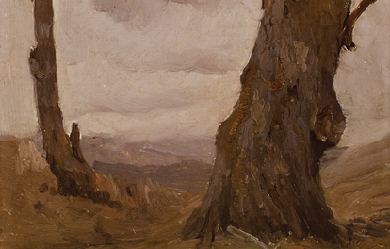
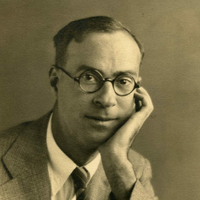
Robert Francis (August 12, 1901; Upland, Pennsylvania– July 13, 1987) was an American poet who lived most of his life in Amherst, Massachusetts. Life Robert Francis was born on August 12, 1901 in Upland, Pennsylvania. He graduated from Harvard University in 1923. He would later attend the Graduate School of Education at Harvard where he once said that he felt that he’d come home. He lived in a small house he built himself in 1940, which he called Fort Juniper, near Cushman Village in Amherst, Massachusetts. One of his poetic mentors was Robert Frost, and indeed Francis’s first volume of poems, Stand Here With Me (1936), displays a poetic voice eerily reminiscent of Frost’s own in carefully crafted nature poems. Frost once said: “poetry is the only acceptable way to say one thing and mean another.” Later work Francis published very little during the 1940s–1950s. He decided that “for better or worse, I was a poet and there was really nothing else for me to do but go on being a poet. It was too late to change even if I had wanted to. Poetry was my most central, intense and inwardly rewarding experience.” In 1960, Francis published The Orb Weaver, which revived his reputation as a poet. Francis uses hidden meanings in his poems, which suggest another way that Frost made an impression on Francis’s poetry. In later volumes, Francis found a voice distinctively his own, relaxed in meter and characterized by puns, word-plays, slant rhymes, and repetitions of key words. Aside from one long narrative poem in Frostian blank verse, Francis’s poetry consists largely of concise lyrics, somewhat limited in thematic range but intensely crafted and deeply personal. Frost would later say that Robert Francis was America’s best neglected poet. He often wrote about nature and baseball. His autobiography, The Trouble with Francis, was published in 1971 and details his struggle with neglect. Francis died July 13, 1987. Awards * Francis won the Shelley Memorial Award in 1939. In 1984 the Academy of American Poets gave Francis its award for distinguished poetic achievement. Works Poetry * * Stand Here With Me. The Macmillan Company. 1936. * The Face Against the Glass. by the author. 1950. * The Orb Weaver. University Press of New England. 1960. ISBN 978-0-8195-1005-1. * Come out into the sun: poems new and selected. University of Massachusetts Press. 1965. ISBN 978-0-87023-015-8. * Like ghosts of eagles: poems, 1966–1974. University of Massachusetts Press. 1974. * Collected Poems, 1936–1976. NetLibrary, Incorporated. 1985. ISBN 978-0-585-28147-6. * Late fire, late snow: new and uncollected poems. University of Massachusetts Press. 1992. ISBN 978-0-87023-814-7. * http://www.poemhunter.com/best-poems/robert-francis/thoreau-in-italy/ Autobiography * The Trouble with Francis. University of Massachusetts Press. 1971. ISBN 978-0-87023-083-7. References Wikipedia—https://en.wikipedia.org/wiki/Robert_Francis_(poet)
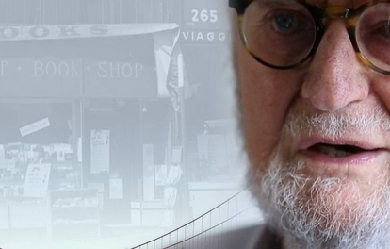
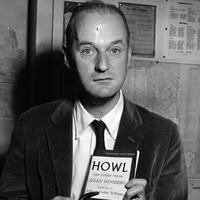
Lawrence Monsanto Ferlinghetti (born March 24, 1919) is an American poet, painter, liberal activist, and the co-founder of City Lights Booksellers & Publishers. Author of poetry, translations, fiction, theatre, art criticism, and film narration, he is best known for A Coney Island of the Mind (1958), a collection of poems that has been translated into nine languages, with sales of more than one million copies. Early life Lawrence Ferlinghetti was born on March 24, 1919 in Bronxville, New York. His mother, Albertine Mendes-Monsanto (born in Lyon, France) was of French/Portuguese Sephardic heritage. His father, Carlo Ferlinghetti, was born in Chiari, a small town in the province of Brescia, Italy on March 14, 1872. He immigrated to the United States in 1894, was naturalized in 1896, and worked as an auctioneer in Little Italy, of New York City. At some unknown point, Carlo Ferlinghetti shortened the family name to "Ferling," and Lawrence would not learn of his original family name until 1942, when he had to provide a birth certificate to join the U.S. Navy. Although he used "Ferling" for his earliest published work, Ferlinghetti reverted to the original Italian "Ferlinghetti" in 1955, when publishing his first book of poems, Pictures of the Gone World. Ferlinghetti's father died six months before he was born, and his mother was committed to an asylum shortly after his birth. He was raised by his French aunt Emily, the former wife of Ludovico Monsanto, an uncle of his mother from the Virgin Islands, who taught Spanish at the U.S. Naval Academy. Emily took Ferlinghetti to Strasbourg, France, where they lived during his first five years of his life, Ferlinghetti was raised speaking French as his first language. After their return to the U.S., Ferlinghetti was placed in an orphanage in Chappaqua, New York while Emily looked for employment. She eventually was hired as a French governess for the daughter of Presley Eugene Bisland and his wife, Anna Lawrence Bisland, in Bronxville, New York, the latter being the daughter of the founder of Sarah Lawrence College, William Van Duzer Lawrence. They resided at the Plashbourne Estate. In 1926, Ferlinghetti was left in the care of the Bislands. He later attended various schools including Riverdale Country School, Bronxville Public School, and Mount Hermon School (now Northfield Mount Hermon School). During these years, Ferlinghetti became an Eagle Scout in the Boy Scouts of America. He attended the University of North Carolina in Chapel Hill, where he earned a B.A. in journalism in 1941. His entry to the world of journalism was writing sports for The Daily Tar Heel, and he published his first short stories in Carolina Magazine, for which Thomas Wolfe had written. World War II In the summer of 1941, he lived with two college mates on Little Whale Boat Island in Casco Bay, Maine, lobster fishing, and raking moss from rocks to be sold in Portland, Maine, for pharmaceutical use. This experience gave him a love of the sea, a theme that runs through much of his poetry. After the December 7, 1941, Japanese attack on Pearl Harbor, Ferlinghetti enrolled in midshipmen’s school in Chicago, and in 1942 shipped out as junior officer on J. P. Morgan III's yacht, which had been refitted to patrol for submarines off the East Coast. Next, Ferlinghetti was assigned to the Ambrose Lightship outside New York harbor, to identify all incoming ships. In 1943 and 1944, he served as an officer on three U.S. Navy subchasers used as convoy escorts. As commander of the submarine chaser USS SC1308, he was at the Normandy invasion as part of the anti-submarine screen around the beaches. After VE Day, the Navy transferred him to the Pacific Theater, where he served as navigator of the troop ship USS Selinur. Six weeks after the atomic bomb fell on Nagasaki, he visited the ruins of the city, an experience that turned him into a lifelong pacifist. Columbia University and The Sorbonne After the war, he worked briefly in the mailroom at Time magazine, in Manhattan. The G.I. Bill then enabled him to enroll in the graduate school of Columbia University. Among his professors there were Babette Deutsch, Lionel Trilling, Jacques Barzun, and Mark Van Doren. In those years he was reading modern literature, and has said that at that time, he was influenced particularly by Shakespeare, Marlowe, the Romantic poets, Gerard Manley Hopkins, and James Joyce, as well as American poets Whitman, T. S. Eliot, Ezra Pound, Carl Sandburg, Vachel Lindsay, Marianne Moore, E. E. Cummings, and American novelists Thomas Wolfe, Ernest Hemingway, and John Dos Passos. He earned a master's degree in English literature in 1947 with a thesis on John Ruskin and the British painter J. M. W. Turner. From Columbia, he went to Paris to continue his studies and lived in the city between 1947 and 1951, earning a Doctorat de l’Université de Paris, with a "mention très honorable." His two theses were on the city as a symbol in modern poetry and on the nature of Gothic. He met his future wife, Selden Kirby-Smith, granddaughter of Edmund Kirby-Smith, in 1946 aboard a ship en route to France. They both were heading to Paris to study at the Sorbonne. Kirby-Smith went by the name Kirby. San Francisco – City Lights Books After marrying in 1951 in Duval County, Florida, they settled in San Francisco in 1953, where he taught French in an adult education program, painted, and wrote art criticism. His first translations, of poems by the French surrealist Jacques Prévert, were published by Peter D. Martin in his popular culture magazine City Lights. In 1953, Ferlinghetti and Martin founded City Lights Bookstore, the first all-paperbound bookshop in the country. Two years later, after the departure of Martin, Ferlinghetti launched the publishing wing of City Lights with his own first book of poems, Pictures of the Gone World, the first number in the Pocket Poets Series. This volume was followed by books by Kenneth Rexroth, Kenneth Patchen, Marie Ponsot, Allen Ginsberg, Bob Kaufman, Denise Levertov, Robert Duncan, William Carlos Williams, and Gregory Corso. Although City Lights Publishers is best known for its publication of Beat Generation writers, Ferlinghetti never intended to publish the Beats exclusively, and the press has always maintained a strong international list. City Lights Publishers expanded its list from poetry to include prose, including novels, biography, memoirs, essays, and cultural studies. In 1972, City Lights published a collection of short stories by Charles Bukowski, Erections, Ejaculations, Exhibitions, and General Tales of Ordinary Madness (since republished in two volumes, Tales of Ordinary Madness and The Most Beautiful Woman in Town). Subsequently it took over publication of Bukowski's collection of "Notes of a Dirty Old Man" columns for Open City from the pornography publisher Essex House in the early 1970s. Since then, it has published a sequel to Notes and a book of ephemera by Bukowski. Other prose works include Neal Cassady's memoir The First Third, Edie Kerouac-Parker's memoir of her life with Jack Kerouac, and William S. Burroughs's The Yage Letters to Allen Ginsberg, and other ephemera. It has also published political books by prominent authors, including Noam Chomsky, Tom Hayden, and Howard Zinn. Books published in translation include such authors as Georges Bataille, Bertolt Brecht, and Johann Wolfgang von Goethe. Howl trial The fourth number in the Pocket Poets Series was Allen Ginsberg’s Howl. Ferlinghetti was in attendance at the now-famous Six Gallery reading where Ginsberg first performed Howl publicly. The next day Ferlinghetti wired Ginsberg: "I greet you at the beginning of a great literary career," subsequently offering to publish his work. The book was seized in 1956 by the San Francisco police. Ferlinghetti and Shig Murao, the bookstore manager who had sold the book to the police, were arrested on obscenity charges. After charges against Murao were dropped, Ferlinghetti, defended by Jake Ehrlich and the American Civil Liberties Union, stood trial in San Francisco Municipal court. The publicity generated by the trial drew national attention to San Francisco Renaissance and Beat movement writers. Ferlinghetti had the support of prestigious literary and academic figures, and, at the end of a long trial, Judge Clayton W. Horn found Howl not obscene, and acquitted him in October 1957. The landmark First Amendment case established a key legal precedent for the publication of other controversial literary work with redeeming social importance. In 2010, Andrew Rogers portrayed Ferlinghetti in the film Howl. Beat writers Although in style and theme, Ferlinghetti’s own writing is very unlike that of the original New York Beat circle, he had important associations with the Beat writers, who made City Lights Bookstore their headquarters when they were in San Francisco. He often has claimed that he was not a Beat, but a bohemian of an earlier generation. A married war veteran and a bookstore proprietor, he did not share the high (or low) life of the Beats on the road. Jack Kerouac wrote Ferlinghetti into the character “Lorenzo Monsanto” in his autobiographical novel, Big Sur (1962), the story of Kerouac’s stay (with the Cassadys, the McClures, Lenore Kandel, Lew Welch, and Philip Whalen) at Ferlinghetti’s cabin in the wild coastal region of Big Sur. Kerouac depicts the Ferlinghetti figure as a generous and good-humored host, in the midst of Dionysian revels and breakdowns. Over the years Ferlinghetti published work by many of the Beats, including Allen Ginsberg, Jack Kerouac, Gregory Corso, William S. Burroughs, Diane diPrima, Michael McClure, Philip Lamantia, Bob Kaufman, and Gary Snyder. He was Ginsberg’s publisher for more than thirty years. When the Indian poets of the Hungryalists literary movement were arrested in 1964 at Kolkata, Ferlinghetti introduced the Hungryalist poets to Western readers through the initial issues of City Lights Journal. Political engagement Soon after settling in San Francisco in 1950, Ferlinghetti met the poet Kenneth Rexroth, whose concepts of philosophical anarchism influenced his political development. He self-identifies as a philosophical anarchist, regularly associated with other anarchists in North Beach, and he sold Italian anarchist newspapers at the City Lights Bookstore. A critic of U.S. foreign policy, Ferlinghetti has taken a stand against totalitarianism and war. While Ferlinghetti has expressed that he is "an anarchist at heart," he concedes that the world would need to be populated by "saints" in order for pure anarchism to be lived practically. Hence he espouses what can be achieved by Scandinavian-style democratic socialism. Ferlinghetti's work challenges the definition of art and the artist’s role in the world. He urged poets to be engaged in the political and cultural life of the country. As he writes in Populist Manifesto: "Poets, come out of your closets, Open your windows, open your doors, You have been holed up too long in your closed worlds... Poetry should transport the public/to higher places/than other wheels can carry it..." On January 14, 1967, he was a featured presenter at the Gathering of the tribes "Human Be-In," which drew tens of thousands of people and launched San Francisco's "Summer of Love." In 1968, he signed the “Writers and Editors War Tax Protest” pledge, vowing to refuse tax payments in protest against the Vietnam War. Ferlinghetti was instrumental in bringing poetry out of the academy and back into the public sphere with public poetry readings. With Ginsberg and other progressive writers, he took part in events that focused on such political issues as the Cuban revolution, the nuclear arms race, farm-worker organizing, the murder of Salvador Allende, the Vietnam War, May ’68 in Paris, the Sandinistas in Nicaragua, and the Zapatista Army of National Liberation in Mexico. He read not only to audiences in the United States, but widely in Europe and Latin America. Many of his writings grew from travels in France, Italy, the Soviet Union, Cuba, Mexico, Chile, Nicaragua, and the Czech Republic. In March 2012, he added his support to the movement to save the Gold Dust Lounge, a historic Gold Rush-era bar in San Francisco, which lost its lease in Union Square. Painting Ferlinghetti began painting while in Paris in 1948. In San Francisco, he occupied a studio at 9 Mission Street on the Embarcadero in the 1950s that he inherited from Hassel Smith, and subsequently passed on to the artist Howard Hack. He admired the New York abstract expressionists, and his first work exhibits their influence. A more figurative style is apparent in his later work. Ferlinghetti’s paintings have been shown at various museums around the world, from solo shows at the Butler Institute of American Art to Il Palazzo delle Esposizioni in Rome. He has been associated with the international Fluxus movement through the Archivio Francesco Conz in Verona. In San Francisco, his work may be seen regularly at the George Krevsky Gallery. In 2009 Ferlinghetti became a member of the Honour Committee of the Italian artistic literary movement IMMAGINE&POESIA, founded under the patronage of Aeronwy Thomas. A retrospective of Ferlinghetti's artwork, 60 years of painting, was staged in Rome and Reggio Calabria in 2010. Jack Kerouac Alley In 1987, he was the initiator of the transformation of Jack Kerouac Alley, located at the side of his shop. He presented his idea to the San Francisco Board of Supervisors calling for repavement and renewal. Since 1991, young volunteers from the Adopt-An-Alleyway Youth Empowerment Project – a program run by the Chinatown Community Development Center – have maintained the good condition of the alley, which is a bridge between Chinatown and North Beach. Awards He has received numerous awards, including the Los Angeles Times’ Robert Kirsch Award, the BABRA Award for Lifetime Achievement, the National Book Critics Circle Ivan Sandrof Award for Contribution to American Arts and Letters, and the ACLU Earl Warren Civil Liberties Award. He won the Premio Taormino in 1973, and since then has been awarded the Premio Camaiore, the Premio Flaiano, the Premio Cavour, among other honors in Italy. Ferlinghetti was named San Francisco’s Poet Laureate in August 1998 and served for two years. In 2003 he was awarded the Robert Frost Memorial Medal, the Author’s Guild Lifetime Achievement Award, and he was elected to the American Academy of Arts and Letters in 2003. The National Book Foundation honored him with the inaugural Literarian Award (2005), given for outstanding service to the American literary community. In 2007 he was named Commandeur, French Order of Arts and Letters. In 2012, Ferlinghetti received the Douglas MacAgy Distinguished Achievement Award from the San Francisco Art Institute. In 2012, Ferlinghetti was awarded the inaugural Janus Pannonius International Poetry Prize from the Hungarian PEN Club. After learning that the government of Hungary under Prime Minister Viktor Orbán is a partial sponsor of the €50,000 prize, he declined to accept the award. In declining, Ferlinghetti cited his opposition to the "right wing regime" of Prime Minister Orban, and his opinion that the ruling Hungarian government under Mr. Orban is curtailing civil liberties and freedom of speech for the people of Hungary. In popular culture The Italian band Timoria dedicated the song "Ferlinghetti Blues" (from the album El Topo Grand Hotel) to the poet, where Ferlinghetti recites one of his poems. Recordings of Ferlinghetti reading want ads, as featured on radio station KPFA in 1957, were recorded by Henry Jacobs and are featured on the Meat Beat Manifesto album 'At the Center'. Ferlinghetti gave Canadian punk band Propagandhi permission to use his painting The Unfinished Flag of the United States, which features a map of the world painted in the stars and stripes, as the cover of their 2001 release Today's Empires, Tomorrow's Ashes. Before this, the same painting was used for the cover of Michael Parenti's 1995 book, Against Empire, which was published by City Lights. Ferlinghetti recited the poem Loud Prayer at The Band's final performance. Entitled The Last Waltz, this concert was filmed by Martin Scorsese and released as a documentary which included Ferlinghetti's recitation. Julio Cortázar, in his Rayuela (Hopscotch) (1963) references a poem by Ferlinghetti in Chapter 121. He appears as himself in the 2006 comedy film The Darwin Awards. Bob Dylan used Ferlinghetti's "Baseball Canto" on the Baseball show of Theme Time Radio Hour. Roger McGuinn, the former leader of the Byrds, referred to Ferlinghetti and "A Coney Island of the Mind" in his song "Russian Hill", from his 1977 album Thunderbyrd. Cyndi Lauper was inspired by A Coney Island of the Mind to write the song "Into the Nightlife" for her 2008 album Bring Ya to the Brink. Seamus McNally's 2007 filmed adaptation of Jacques Prévert's "To Paint the Portrait of a Bird" uses Ferlinghetti's English translation as it's narrative text. The Blue Devils Drum and Bugle Corps's 2008 marching show was entitled "Constantly Risking Absurdity", with movements entitled after various lines in Ferlinghetti's poem. The corps took second place at the Drum Corps International Finals. Aztec Two-Step is an American folk-rock band formed by Rex Fowler and Neal Shulman at a chance meeting on open stage at a Boston coffee house, the Stone Phoenix, in 1971. The band was named after a line from the poem "A Coney Island of the Mind" by Ferlinghetti. Bristol Sound band Unforscene used Ferlinghetti's poem "Pictures of the Gone World 11" (or "The World is a Beautiful Place...") in the song "The World Is" on its 2002 album New World Disorder. In 2011, Ferlinghetti contributed two of his poems to the celebration of the 150th Anniversary of Italian unification: Song of the Third World War and Old Italians Dying inspired the artists of the exhibition Lawrence Ferlinghetti and Italy 150 held in Turin, Italy (May–June 2011). Christopher Felver made the 2013 documentary on Ferlinghetti, Lawrence Ferlinghetti: A Rebirth of Wonder. Ferlinghetti prefers association football to American football. References Wikipedia – https://en.wikipedia.org/wiki/Lawrence_Ferlinghetti
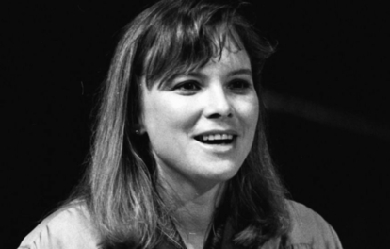
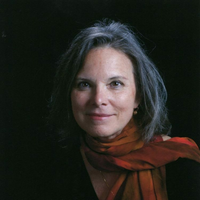
Carolyn Forché (born April 28, 1950) is an American poet, editor, translator, and human rights advocate. She has received awards for her literary work. Biography Forché was born in Detroit, Michigan to Michael Joseph and Louise Nada Blackford Sidlosky. Forché earned a Bachelor of Arts (B.A) in Creative Writing at Michigan State University in 1972, and MFA at Bowling Green State University in 1974. She taught at a number of universities, including Bowling Green State University, Michigan State University, the University of Virginia, Skidmore College, Columbia University, San Diego State University and in the Master of Fine Arts program at George Mason University. She is now Director of the Lannan Center for Poetry and Poetics and holds the Lannan Chair in Poetry at Georgetown University in Washington, D.C. She lives in Maryland with her husband, Harry Mattison, a photographer, whom she married in 1984. Career Forché's first poetry collection, Gathering the Tribes (1976), won the Yale Series of Younger Poets Competition, leading to publication by Yale University Press. In 1977, she traveled to Spain to translate the work of Salvadoran-exiled poet Claribel Alegría. She has also translated the work of Georg Trakl and Mahmoud Darwish, as well as many others. Upon her return from Spain, she received a Guggenheim Fellowship, which enabled her to travel to El Salvador, where she worked as a human rights advocate. Her second book, The Country Between Us (1981), was published with the help of Margaret Atwood. It received the Poetry Society of America’s Alice Fay di Castagnola Award, and was also the Lamont Poetry Selection of the Academy of American Poets. She won the 2006 Robert Creeley Award. Her articles and reviews have appeared in The New York Times, The Washington Post, The Nation, Esquire, Mother Jones, Boston Review, and others. Forché has held three fellowships from the National Endowment for the Arts, and in 1992 received a Lannan Foundation Literary Fellowship. Her anthology, Against Forgetting: Twentieth-Century Poetry of Witness, was published in 1993, and her third book of poetry, The Angel of History (1994), was chosen for The Los Angeles Times Book Award. Her works include the famed poem The Colonel (The Country Between Us). She is also a trustee for the Griffin Poetry Prize. Although Forché is sometimes described as a political poet, she considers herself a poet who is politically engaged. After first acquiring both fame and notoriety for her second volume of poems, The Country Between Us, she pointed out that this reputation rested on a limited number of poems describing what she personally had experienced in El Salvador during the Salvadoran Civil War. Her aesthetic is more one of rendered experience and at times of mysticism rather than one of ideology or agitprop. Forché is particularly interested in the effect of political trauma on the poet’s use of language. The anthology Against Forgetting was intended to collect the work of poets who had endured the impress of extremity during the 20th century, whether through their engagements or force of circumstance. These experiences included warfare, military occupation, imprisonment, torture, forced exile, censorship, and house arrest. The anthology, composed of the work of one hundred and forty-five poets writing in English and translated from over thirty languages, begins with the Armenian Genocide and ends with the uprising of the pro-Democracy movement at Tiananmen Square. Although she was not guided in her selections by the political or ideological persuasions of the poets, Forché believes the sharing of painful experience to be radicalizing, returning the poet to an emphasis on community rather than the individual ego. In this she was strongly influenced by Terrence des Pres. Forché is also influenced by her Slovak family background, particularly the life story of her grandmother, an immigrant whose family included a woman resistance fighter imprisoned during the Nazi occupation of former Czechoslovakia. Forché was raised Roman Catholic and religious themes are frequent in her work. Among her translations are Mahmoud Darwish’s Unfortunately, It Was Paradise: Selected Poems (2003), Claribel Alegría’s Sorrow (1999), and Robert Desnos’s Selected Poetry (with William Kulik, for the Modern English Poetry Series, 1991). Her fourth book of poems, Blue Hour, was released in 2003. Other books include a memoir, The Horse on Our Balcony (2010, HarperCollins); a book of essays (2011, HarperCollins); and a fifth collection of poems, In the Lateness of the World (Bloodaxe Books, due out in 2017). Forché received an honorary doctorate from the University of Scranton in 2010.
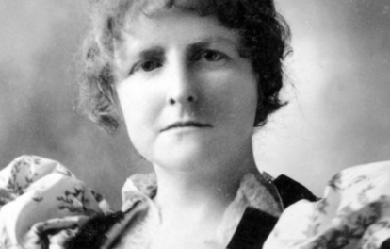
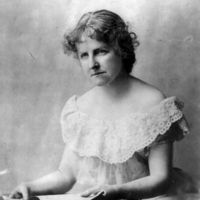
Mary Eleanor Wilkins Freeman (October 31, 1852 – March 13, 1930) was a prominent 19th-century American author. Biography Freeman was born in Randolph, Massachusetts on October 31, 1852, to Eleanor Lothrop and Warren Edward Wilkins, who originally baptized her “Mary Ella”. Freeman’s parents were orthodox Congregationalists, bestowing a very strict childhood. Religious constraints play a key role in some of her works. In 1867, the family moved to Brattleboro, Vermont, where Freeman graduated from the local high school before attending, Mount Holyoke College (then, Mount Holyoke Female Seminary) in South Hadley, Massachusetts, for one year, from 1870–71. She later finished her education at Glenwood Seminary in West Brattleboro. When the family’s dry goods business in Vermont failed in 1873, the family returned to Randolph, Massachusetts. Freeman’s mother died three years later, and she changed her middle name to “Eleanor” in her memory. Freeman’s father died suddenly in 1883, leaving her without any immediate family and an estate worth only $973. She moved in with a friend, Mary J. Wales (February 26, 1847 – December 24, 1900), and began writing as her only source of income. During a visit to Metuchen, New Jersey in 1892, she met Dr. Charles Manning Freeman, a non-practicing medical doctor seven years younger than she. After years of courtship and delays, the two were married on January 1, 1902. Immediately after, she firmly established her name as “Mary E. Wilkins Freeman”, which she asked Harper’s to use on all of her work. The couple built a home in Metuchen, where Freeman became a local celebrity for her writing, despite having occasionally published satirical fictional representations of her neighbors. Her husband suffered from alcoholism and an addiction to sleeping powders. He also had a reputation for driving fast horses, and womanizing. He was committed to the New Jersey State Hospital for the Insane in Trenton, and the two legally separated a year later. After his death in 1923, he left the majority of his wealth to his chauffeur and only one dollar to his former wife. In April 1926, Freeman became the first recipient of the William Dean Howells Medal for Distinction in Fiction from the American Academy of Arts and Letters. Freeman suffered a heart attack and died in Metuchen on March 15, 1930, aged 77. She was interred in Hillside Cemetery in Scotch Plains, New Jersey. Writing Freeman began writing stories and verse for children while still a teenager to help support her family and was quickly successful. Her career as a short story writer launched in 1881 when she took first place in a short story contest with her submission “The Ghost Family.” When the supernatural caught her interest, the result was a group of short stories which combined domestic realism with supernaturalism and these have proved very influential. Her best known work was written in the 1880s and 1890s while she lived in Randolph. She produced more than two dozen volumes of published short stories and novels. She is best known for two collections of stories, A Humble Romance and Other Stories (1887) and A New England Nun and Other Stories (1891). Her stories deal mostly with New England life and are among the best of their kind. Freeman is also remembered for her novel Pembroke (1894), and she contributed a notable chapter to the collaborative novel entitled The Whole Family (1908). Through her different genres of work including children’s stories, poems, and short stories, Mary Wilkins Freeman sought to demonstrate her values as a feminist. During the time which she was writing, she did this in nonconventional ways; for example, she diverged from making her female characters weak and in need of help which was a common trope in literature. Through characters such as Louisa in her short story: “A New England Nun,” Freeman challenges contemporary ideas concerning female roles, values, and relationships in society. Also, Freeman’s short story “The Revolt of Mother illustrated the struggles of rural women and the role they played within their families. “The Revolt of Mother” initiated the discussion on the rights of rural woman, went on to inspire many more pieces discussing the lack of control rural woman had over families finances, and looking to improve the structure of farm families in the early twentieth-century. The one-act opera The Village Singer by Stephen Paulus was adapted from a Freeman short story; it was commissioned by Opera Theater of Saint Louis, and was premiered in 1979.
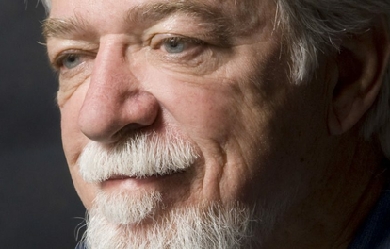
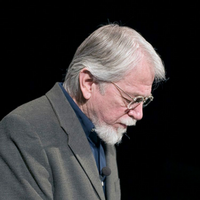
B.H. Fairchild (born 1942) is an American poet and former college professor. His most recent book is Usher (W.W. Norton, 2009), and his poems have appeared in literary journals and magazines including The New Yorker, The Paris Review, The Southern Review, Poetry, TriQuarterly, The Hudson Review, Salmagundi, The Sewanee Review. His third poetry collection, The Art of the Lathe, winner of the 1997 Beatrice Hawley Award (Alice James Books, 1998), brought Fairchild’s work to national prominence, garnering him a large number of awards and fellowships including the William Carlos Williams Award, Kingsley Tufts Poetry Award, California Book Award, Natalie Ornish Poetry Award, PEN Center USA West Poetry Award, National Book Award (finalist), Capricorn Poetry Award, and Rockefeller and Guggenheim fellowships. The book ultimately gave him international prominence, as The Way Weiser Press in England published the U.K. edition of the book. The Los Angeles Times wrote that “The Art of the Lathe by B.H. Fairchild has become a contemporary classic—a passionate example of the plain style, so finely crafted and perfectly pitched... workhorse narratives suffused with tenderness and elegiac music.” Fairchild has written that a fellowship from the National Endowment for the Arts was vital to his career as a poet: "It’s very simple: without an NEA Fellowship in 1989-90, I would not have been able to complete my second book, Local Knowledge, nor have had the necessary time to compose the core poems for The Art of the Lathe, my third book, which, I am proud to say, received the Kingsley Tufts Award and was a finalist for the National Book Award, thus bringing my work to a wider audience than the immediate members of my family and also, therefore, making future work possible.” He was born in Houston, Texas, and grew up in small towns in the oil fields of Oklahoma, Texas, and Kansas, later working through high school and college for his father, a lathe machinist. He taught English and Creative Writing at California State University, San Bernardino and Claremont Graduate University. He lives in Claremont, California with his wife, Patti, and dog, Minnie. As of 2011, it has been announced that Fairchild will teach at The University of North Texas. Books * Full-Length Poetry Collections * The Blue Buick: New and Selected Poems (W. W. Norton, 2014) * Usher (W. W. Norton, 2009) * Local Knowledge (W. W. Norton, 2005, second edition) * Early Occult Memory Systems of the Lower Midwest (W. W. Norton, 2003) * The Arrival of the Future (Alice James Books, 2000, second edition) * The Art of the Lathe (Alice James Books, 1998) * Local Knowledge (Quarterly Review of Literature, Princeton, NJ, 1991) * The Arrival of the Future (illustrated by Ross Zirkle, Swallow’s Tale Press, 1985; Livingston Publishing, 1985) * Chapbooks * The System of Which the Body Is One Part (State Street Press, 1988) * Flight (Devil’s Millhopper Press, 1985) * C & W Machine Works (Trilobite Press, 1983) * Special Editions * Trilogy, with an introduction by Paul Mariani and engravings by Barry Moser. (Pennyroyal Press, 2008) * Literary Criticism * Such Holy Song: Music as Idea, Form, and Image in the Poetry of William Blake (Kent State University Press, 1980) Honors and awards * 2015 The Paterson Poetry Prize * 2015 The Blue Buick, one of two books of poetry chosen for the RUSA/ALA Notable Books List * 2014 John William Corrington Award for Literary Excellence from Centenary College * 2014 Pushcart Prize in Poetry for “The Story” * 2011 Pushcart Prize in the Essay for “Logophilia” * 2010 Best of the Net Award for “The Student Assistant” * 2009 Pushcart Prize in Poetry for “Frieda Pushnik” * 2007 University of Kansas Distinguished Achievement Award * 2005 Lannan Foundation Residency in Marfa, Texas * 2005 Gold Medal in Poetry, California Book Awards * 2005 Aiken Taylor Award for Modern American Poetry * 2005 National Endowment for the Arts - Literature Fellowship in Poetry * 2004 Bobbitt National Prize for Poetry * 2002 Arthur Rense Poetry Prize, from the American Academy of Arts and Letters * 2002 National Book Critics Circle Award, for Early Occult Memory Systems of the Lower Midwest * 2001 The Frost Place poet in residence * 2000 Rockefeller Fellowship * 1999 Guggenheim Fellowship * 1999 William Carlos Williams Award * 1999 Kingsley Tufts Poetry Award * 1999 California Book Award * 1999 Natalie Ornish Poetry Award * 1999 PEN Center USA West Poetry Award * 1998 Finalist, National Book Award * 1997 Beatrice Hawley Award * 1996 Capricorn Poetry Award * 1988 National Endowment for the Arts - Literature Fellowship in Poetry * Walter E. Dakin Fellowship to the Sewanee Writers Conference * National Writers’ Union First Prize * AWP Anniversary Award References Wikipedia—https://en.wikipedia.org/wiki/B._H._Fairchild
I was born in 1946 and started writing poetry when about 16 years old. In the 1970's I occasionally had poems published in a local newspaper while living in Delaware (belated thanks to editor E.A.Barrell!) and more recently (I offer no explanation for the hiatus other than "life in the way") have been posting poems and short essays at the Weather Underground blog site under the name "EarlB". Changes at that site are making my posts less visible, so I have begun transferring poems posted there over the past 6 years to this site. Because of the science/nature emphasis of the website, my poems over the past years have had a loose "nature" theme to them. Eventually, I hope to accumulate enough decent poems (and courage) to publish a small book of poems. Having them scrutinized by others in the field will help me improve technique.
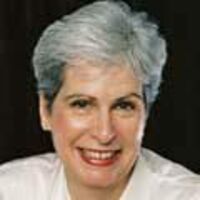
Mary Elizabeth Frye (November 13, 1905 – September 15, 2004) was an American housewife and florist, best known as the author of the poem “Do not stand at my grave and weep”, written in 1932. She was born in Dayton, Ohio, and was orphaned at the age of three. She moved to Baltimore, Maryland, when she was twelve. She was an avid reader with a remarkable memory. In 1927 she married Claud Frye, who ran a clothing business, while she grew and sold flowers. The poem for which she became famous was originally composed on a brown paper shopping bag, and was reportedly inspired by the story of a young Jewish girl, Margaret Schwarzkopf, who had been staying with the Frye household and had been unable to visit her dying mother in Germany because of anti-Semitic unrest. Because people liked her twelve-line, untitled verse, Frye made many copies and circulated them privately. She never published or copyrighted the poem. The identity of the author of the poem was unknown until the late 1990s, when Frye revealed that she had written it. Her claim was confirmed in 1998 after research by Abigail Van Buren.
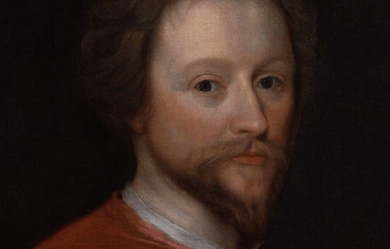
John Fletcher (1579–1625) was a Jacobean playwright. Following William Shakespeare as house playwright for the King’s Men, he was among the most prolific and influential dramatists of his day; both during his lifetime and in the early Restoration, his fame rivaled Shakespeare’s. Though his reputation has been far eclipsed since, Fletcher remains an important transitional figure between the Elizabethan popular tradition and the popular drama of the Restoration. Biography Early life Fletcher was born in December 1579 (baptised 20 December) in Rye, Sussex, and died of the plague in August 1625 (buried 29 August in St. Saviour’s, Southwark). His father Richard Fletcher was an ambitious and successful cleric who was in turn Dean of Peterborough, Bishop of Bristol, Bishop of Worcester, and Bishop of London (shortly before his death) as well as chaplain to Queen Elizabeth. As dean of Peterborough, Richard Fletcher, at the execution of Mary, Queen of Scots, at Fotheringay “knelt down on the scaffold steps and started to pray out loud and at length, in a prolonged and rhetorical style as though determined to force his way into the pages of history”. He cried out at her death, “So perish all the Queen’s enemies!” Richard Fletcher died shortly after falling out of favour with the queen, over a marriage the queen had advised against. He appears to have been partly rehabilitated before his death in 1596; however, he died substantially in debt. The upbringing of John Fletcher and his seven siblings was entrusted to his paternal uncle Giles Fletcher, a poet and minor official. His uncle’s connections ceased to be a benefit, and may even have become a liability, after the rebellion of the Earl of Essex, who had been his patron. Fletcher appears to have entered Corpus Christi College, Cambridge University in 1591, at the age of eleven. It is not certain that he took a degree, but evidence suggests that he was preparing for a career in the church. Little is known about his time at college, but he evidently followed the same path previously trodden by the University wits before him, from Cambridge to the burgeoning commercial theatre of London. Collaborations with Beaumont In 1606, he began to appear as a playwright for the Children of the Queen’s Revels, then performing at the Blackfriars Theatre. Commendatory verses by Richard Brome in the Beaumont and Fletcher 1647 folio place Fletcher in the company of Ben Jonson; a comment of Jonson’s to Drummond corroborates this claim, although it is not known when this friendship began. At the beginning of his career, his most important association was with Francis Beaumont. The two wrote together for close to a decade, first for the children and then for the King’s Men. According to an anecdote transmitted or invented by John Aubrey, they also lived together (in Bankside), sharing clothes and having “one wench in the house between them.” This domestic arrangement, if it existed, was ended by Beaumont’s marriage in 1613, and their dramatic partnership ended after Beaumont fell ill, probably of a stroke, the same year. Successor to Shakespeare By this time, Fletcher had moved into a closer association with the King’s Men. He collaborated with Shakespeare on Henry VIII, The Two Noble Kinsmen, and the lost Cardenio, which is probably (according to some modern scholars) the basis for Lewis Theobald’s play Double Falsehood. A play he wrote singly around this time, The Woman’s Prize or the Tamer Tamed, is a sequel to The Taming of the Shrew. In 1616, after Shakespeare’s death, Fletcher appears to have entered into an exclusive arrangement with the King’s Men similar to Shakespeare’s. Fletcher wrote only for that company between the death of Shakespeare and his own death nine years later. He never lost his habit of collaboration, working with Nathan Field and later with Philip Massinger, who succeeded him as house playwright for the King’s Men. His popularity continued unabated throughout his life; during the winter of 1621, three of his plays were performed at court. He died in 1625, apparently of the plague. He seems to have been buried in what is now Southwark Cathedral, although the precise location is not known; there is a reference by Aston Cockayne to a single grave for Fletcher and Massinger (also buried in Southwark). What is more certain is that two simple adjacent stones in the floor of The Choir of Southwark Cathedral, one marked 'Edmond Shakespeare 1607' the other 'John Fletcher 1625' refer to Shakespeare’s younger brother and the playwright. His mastery is most notable in two dramatic types, tragicomedy and comedy of manners. Stage history Fletcher’s early career was marked by one significant failure, of The Faithful Shepherdess, his adaptation of Giovanni Battista Guarini’s Il Pastor Fido, which was performed by the Blackfriars Children in 1608. In the preface to the printed edition of his play, Fletcher explained the failure as due to his audience’s faulty expectations. They expected a pastoral tragicomedy to feature dances, comedy, and murder, with the shepherds presented in conventional stereotypes– as Fletcher put it, wearing “gray cloaks, with curtailed dogs in strings.” Fletcher’s preface in defence of his play is best known for its pithy definition of tragicomedy: "A tragicomedy is not so called in respect of mirth and killing, but in respect it wants [i.e., lacks] deaths, which is enough to make it no tragedy; yet brings some near it, which is enough to make it no comedy." A comedy, he went on to say, must be “a representation of familiar people,” and the preface is critical of drama that features characters whose action violates nature. In that case, Fletcher appears to have been developing a new style faster than audiences could comprehend. By 1609, however, he had found his stride. With Beaumont, he wrote Philaster, which became a hit for the King’s Men and began a profitable connection between Fletcher and that company. Philaster appears also to have initiated a vogue for tragicomedy; Fletcher’s influence has been credited with inspiring some features of Shakespeare’s late romances (Kirsch, 288-90), and his influence on the tragicomic work of other playwrights is even more marked. By the middle of the 1610s, Fletcher’s plays had achieved a popularity that rivalled Shakespeare’s and cemented the preeminence of the King’s Men in Jacobean London. After Beaumont’s retirement and early death in 1616, Fletcher continued working, both singly and in collaboration, until his death in 1625. By that time, he had produced, or had been credited with, close to fifty plays. This body of work remained a major part of the King’s Men’s repertory until the closing of the theatres in 1642. During the Commonwealth, many of the playwright’s best-known scenes were kept alive as drolls, the brief performances devised to satisfy the taste for plays while the theatres were suppressed. At the re-opening of the theatres in 1660, the plays in the Fletcher canon, in original form or revised, were by far the most common fare on the English stage. The most frequently revived plays suggest the developing taste for comedies of manners. Among the tragedies, The Maid’s Tragedy and, especially, Rollo Duke of Normandy held the stage. Four tragicomedies (A King and No King, The Humorous Lieutenant, Philaster, and The Island Princess) were popular, perhaps in part for their similarity to and foreshadowing of heroic drama. Four comedies (Rule a Wife And Have a Wife, The Chances, Beggars’ Bush, and especially The Scornful Lady) were also popular. Yet the popularity of these plays relative to those of Shakespeare and to new productions steadily eroded. By around 1710, Shakespeare’s plays were more frequently performed, and the rest of the century saw a steady erosion in performance of Fletcher’s plays. By 1784, Thomas Davies asserted that only Rule a Wife and The Chances were still current on stage. A generation later, Alexander Dyce mentioned only The Chances. Since then Fletcher has increasingly become a subject only for occasional revivals and for specialists. Fletcher and his collaborators have been the subject of important bibliographic and critical studies, but the plays have been revived only infrequently. Plays Because Fletcher collaborated regularly and widely, attempts to separate out Fletcher’s work from this collaborative fabric of plays have experienced difficulties in attribution. Fletcher collaborated most often with Beaumont and Massinger but also with Nathan Field, Shakespeare and others. Some of his early collaborations with Beaumont were later revised by Massinger, adding another layer of complexity to the collaborative texture of the plays. According to scholars such as Hoy, Fletcher used distinctive mannerisms that Hoy argued identify his presence. According to Hoy’s figures, he frequently uses ye instead of you, at rates sometimes approaching 50%. He employs 'em for them, along with a set of other preferences in contractions. He adds a sixth stressed syllable to a standard pentameter verse line—most often sir but also too or still or next. Various other specific habits and preferences may reveal his hand. The detection of this pattern, this personal Fletcherian textual profile, has persuaded some researchers that they have penetrated the Fletcher canon with what they consider success—and has in turn encouraged the use of similar techniques more broadly in the study of literature. [See: stylometry.] Some scholars, such as Jeffrey Masten and Gordon McMullan, have pointed out limitations of logic and method in Hoy’s and others’ attempts to distinguish playwrights on the basis of style and linguistic preferences. Bibliography has attempted to establish the writers of each play. Attempts to determine the exact “shares” of each writer (for instance by Cyrus Hoy) in particular plays is ongoing, based on patterns of textual and linguistic preferences, stylistic grounds, and idiosyncrasies of spelling. The list that follows gives a tentative verdict on the writing of the plays in Fletcher’s canon, with likeliest composition dates, dates of first publication, and dates of licensing by the Master of the Revels, where available. Solo plays The Faithful Shepherdess, pastoral (written 1608–9; printed 1609?) Valentinian, tragedy (1610–14; 1647) Monsieur Thomas, comedy (c. 1610–16; 1639) The Woman’s Prize, or The Tamer Tamed, comedy (c. 1611?; 1647) Bonduca, tragedy (1611–14; 1647) The Chances, comedy (c. 1613–25; 1647) Wit Without Money, comedy (c. 1614; 1639) The Mad Lover, tragicomedy (acted 5 January 1617; 1647) The Loyal Subject, tragicomedy (licensed 16 November 1618; revised 1633?; 1647) The Humorous Lieutenant, tragicomedy (c. 1619; 1647) Women Pleased, tragicomedy (c. 1619–23; 1647) The Island Princess, tragicomedy (c. 1620; 1647) The Wild Goose Chase, comedy (c. 1621; 1652) The Pilgrim, comedy (c. 1621; 1647) A Wife for a Month, tragicomedy (licensed 27 May 1624; 1647) Rule a Wife and Have a Wife, comedy (licensed 19 October 1624; 1640) Collaborations With Francis Beaumont: The Woman Hater, comedy (1606; 1607) Cupid’s Revenge, tragedy (c. 1607–12; 1615) Philaster, or Love Lies a-Bleeding, tragicomedy (c. 1609; 1620) The Maid’s Tragedy, Tragedy (c. 1609; 1619) A King and No King, tragicomedy (1611; 1619) The Captain, comedy (c. 1609–12; 1647) The Scornful Lady, comedy (c. 1613; 1616) Love’s Pilgrimage, tragicomedy (c. 1615–16; 1647) The Noble Gentleman, comedy (c. 1613?; licensed 3 February 1626; 1647) With Beaumont and Massinger: Thierry and Theodoret, tragedy (c. 1607?; 1621) The Coxcomb, comedy (c. 1608–10; 1647) Beggars’ Bush, comedy (c. 1612–13? revised 1622?; 1647) Love’s Cure, comedy (c. 1612–13?; revised 1625?; 1647) With Massinger: Sir John van Olden Barnavelt, tragedy (August 1619; MS) The Little French Lawyer, comedy (c. 1619–23; 1647) A Very Woman, tragicomedy (c. 1619–22; licensed 6 June 1634; 1655) The Custom of the Country, comedy (c. 1619–23; 1647) The Double Marriage, tragedy (c. 1619–23; 1647) The False One, history (c. 1619–23; 1647) The Prophetess, tragicomedy (licensed 14 May 1622; 1647) The Sea Voyage, comedy (licensed 22 June 1622; 1647) The Spanish Curate, comedy (licensed 24 October 1622; 1647) The Lovers’ Progress or The Wandering Lovers, tragicomedy (licensed 6 December 1623; revised 1634; 1647) The Elder Brother, comedy (c. 1625; 1637) With Massinger and Field: The Honest Man’s Fortune, tragicomedy (1613; 1647) The Queen of Corinth, tragicomedy (c. 1616–18; 1647) The Knight of Malta, tragicomedy (c. 1619; 1647) With Shakespeare: Henry VIII, history (c. 1613; 1623) The Two Noble Kinsmen, tragicomedy (c. 1613; 1634) Cardenio, tragicomedy? (c. 1613) With Middleton and Rowley: Wit at Several Weapons, comedy (c. 1610–20; 1647) With Rowley: The Maid in the Mill (licensed 29 August 1623; 1647). With Field: Four Plays, or Moral Representations, in One, morality (c. 1608–13; 1647) With Massinger, Jonson, and Chapman: Rollo Duke of Normandy, or The Bloody Brother, tragedy (c. 1617; revised 1627–30?; 1639) With Shirley: The Night Walker, or The Little Thief, comedy (c. 1611; 1640) Uncertain: The Nice Valour, or The Passionate Madman, comedy (c. 1615–25; 1647) The Laws of Candy, tragicomedy (c. 1619–23; 1647) The Fair Maid of the Inn, comedy (licensed 22 January 1626; 1647) The Faithful Friends, tragicomedy (registered 29 June 1660; MS.) The Nice Valour may be a play by Fletcher revised by Thomas Middleton; The Fair Maid of the Inn is perhaps a play by Massinger, John Ford, and John Webster, either with or without Fletcher’s involvement. The Laws of Candy has been variously attributed to Fletcher and to John Ford. The Night-Walker was a Fletcher original, with additions by Shirley for a 1639 production. And some of the attributions given above are disputed by some scholars, as noted in connection with Four Plays in One. Rollo Duke of Normandy, an especially difficult case and a focus of much disagreement among scholars, may have been written around 1617, and later revised by Massinger. The first Beaumont and Fletcher folio of 1647 collected 35 plays, most not published previously. The second folio of 1679 added 18 more, for a total of 53. The first folio included The Masque of the Inner Temple and Gray’s Inn (1613), and the second The Knight of the Burning Pestle (1607), widely considered Beaumont’s solo works, although the latter was in early editions attributed to both writers. One play in the canon, Sir John Van Olden Barnavelt, existed in manuscript and was not published till 1883. In 1640 James Shirley’s The Coronation was misattributed to Fletcher upon its initial publication, and was included in the second Beaumont and Fletcher folio of 1679. References Wikipedia—https://en.wikipedia.org/wiki/John_Fletcher_(playwright)
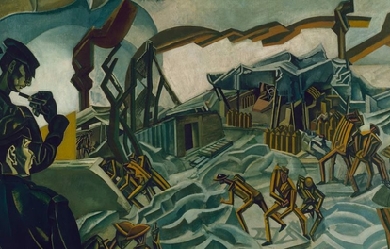
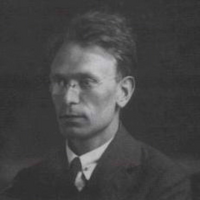
Frank Stuart Flint (19 December 1885– 28 February 1960) was an English poet and translator who was a prominent member of the Imagist group. Ford Madox Ford called him “one of the greatest men and one of the beautiful spirits of the country”. Life and career British poet, and a poetry reviewer with an unusual gift for language, a self-educated man, born in Islington, London; he left school at 13 and worked in various capacities before beginning his long and distinguished career in the Civil Service in 1904. He published a book on French poets, starting in 1908 and by 1910, his intensive private study had gained him recognition as one of Britain’s most highly informed authorities on modern French poetry. His first collection of poems, In the Net of the Stars (1909), consisted mainly of conventional love lyrics. Flint is mostly known for his participation in the “School of Images” with Ezra Pound and T. E. Hulme in 1909, of which he gave an account in the “Poetry Review” in 1909, and which was to serve as the theoretical basis for the later Imagist movement (1913). His subsequent association with Ezra Pound and T. E. Hulme, together with his deepening knowledge of innovative French poetic techniques, radically affected his poetry’s development. Glenn Hughes reports Flint ‘claiming to inventing the open verse form ’unrimed cadence’, by cutting away all personal emotion, where symbolism was barely suggested, but instead shortened and hardened, and where meter was supplanted by cadence’. Hughes explaining Flint’s form is best understood ‘by comparing his poem ’ A Swan Song’(Published in 1909 and later by Pound in 1914 in 'Des Imagistes’) and, his later ‘cadenced ’ version thereof, ' The Swan’, a poem so devoid of superfluities and cliches, to achieve that perfect chiseled beauty which is the essence of classical art’ In 1916 Flint was described as having ' the gift of artistic courage clothed in beauty which will help build the poetry of the future’. Flint himself, considered his 'cadenced’ form to be a reversion to the real tradition of the English poetry of Cynewulf in the 'Riddle, The Nightingale’ Earlier Flint had published a series of articles on contemporary French poets (1912) that much influenced his contemporaries. In 1914 he was included by Pound in Des Imagistes. He entered into a short-lived dispute with Pound as to each one’s relative contribution to the Imagist movement. During the 1930s Flint was among a number of poets who moved away from poetry and towards economics, working for the Statistics Division of the Ministry of Labour writing that "[t]he proper study of mankind is, for the time being, economics". Flint would go on to publish an article entitled The Plain Man and Economics in The Criterion in 1937. He became a leading spokesman for Imagism and exemplified its methods in the concentration and clarity displayed by much of the work in Cadences (1915). Otherworld, his third and last collection, was published in 1920, its lengthy title poem responding to the desolation of the First World War in its meditations on more viable modes of existence. For some years after he ceased publishing poetry, Flint continued to contribute influential articles to the Times Literary Supplement and The Criterion. He was also a prolific translator of prose works and poetry by French, German, and classical authors. With the exception of some short works arising from his activities as a civil servant, he ceased writing for publication entirely in the early 1930s. Poetry In the Net of the Stars, BiblioBazaar (Jun 2009) ISBN 978-1-110-85842-2 Cadences, Poetry Bookshop. London, 1915 Otherworld: Cadences, Poetry Bookshop, 1920 Translations The Love Poems of Emile Verhaeren, Houghton Mifflin, Boston 1916 The Closed Door, by Jean de Bosschere, John Lane, London 1917 Essays etc ‘Contemporary French Poetry’, article in The Poetry Review, August 1912 ‘Some Modern French Poets( A Commentarey with a Specimen) The Chapbook: A Monthly Miscellany, London October 1919 ‘ The Younger French Poets The Chapbook; A Monthly Miscellany, London November 1920 ‘The History of Imagism’, essay in The Egoist, May 1915 ‘The Poetry of HD ’ essay in The Egoist, May 1915 ‘ Six French Poets’ essay in The Egoist, January 1916 ‘Imagisme, Poetry Chicago March 1913 References Wikipedia—https://en.wikipedia.org/wiki/F._S._Flint

my poems are deeply really personal. things I've learned or experiences. i want like to learn to write better, to understand how to convey exactly what i mean. I don't what my poetry to be to cryptic, i want to share myself in my poetry. that's why I'm here, feedback, good or bad. any suggestions?
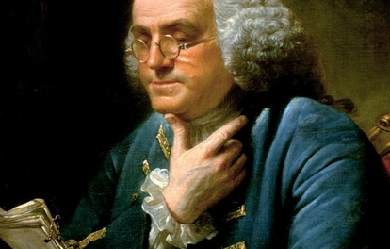
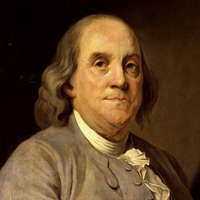
Benjamin Franklin (January 17, 1706 [O.S. January 6, 1705]– April 17, 1790) was one of the Founding Fathers of the United States. A renowned polymath, Franklin was a leading author, printer, political theorist, politician, freemason, postmaster, scientist, inventor, civic activist, statesman, and diplomat. As a scientist, he was a major figure in the American Enlightenment and the history of physics for his discoveries and theories regarding electricity. As an inventor, he is known for the lightning rod, bifocals, and the Franklin stove, among other inventions. He facilitated many civic organizations, including Philadelphia’s fire department and a university. Franklin earned the title of “The First American” for his early and indefatigable campaigning for colonial unity, initially as an author and spokesman in London for several colonies. As the first United States Ambassador to France, he exemplified the emerging American nation. Franklin was foundational in defining the American ethos as a marriage of the practical values of thrift, hard work, education, community spirit, self-governing institutions, and opposition to authoritarianism both political and religious, with the scientific and tolerant values of the Enlightenment. In the words of historian Henry Steele Commager, “In a Franklin could be merged the virtues of Puritanism without its defects, the illumination of the Enlightenment without its heat.” To Walter Isaacson, this makes Franklin “the most accomplished American of his age and the most influential in inventing the type of society America would become.” Franklin became a successful newspaper editor and printer in Philadelphia, the leading city in the colonies, publishing the Pennsylvania Gazette at the age of 23. He became wealthy publishing this and Poor Richard’s Almanack, which he authored under the pseudonym “Richard Saunders”. After 1767, he was associated with the Pennsylvania Chronicle, a newspaper that was known for its revolutionary sentiments and criticisms of the British policies. He pioneered and was first president of the The Academy and College of Philadelphia which opened in 1751 and later became the University of Pennsylvania. He organised and was the first secretary of the American Philosophical Society and was elected president in 1769. Franklin became a national hero in America when, as an agent for several colonies, he spearheaded an effort in London to have the Parliament of Great Britain repeal the unpopular Stamp Act. An accomplished diplomat, he was widely admired among the French as American minister to Paris and was a major figure in the development of positive Franco-American relations. His efforts to secure support for the American Revolution by shipments of crucial munitions proved vital for the American war effort. He was promoted to deputy postmaster-general for the British colonies in 1753, having been Philadelphia postmaster for many years, and this enabled him to set up the first national communications network. After the Revolution he became the first US Postmaster General. He was active in community affairs, colonial and state politics, as well as national and international affairs. From 1785 to 1788, he served as governor of Pennsylvania. Although he initially owned and dealt in slaves, by the 1750s he argued against slavery from an economic perspective and became one of the most prominent abolitionists. His colorful life and legacy of scientific and political achievement, and status as one of America’s most influential Founding Fathers, have seen Franklin honored on coinage and the $100 bill; warships; the names of many towns; counties; educational institutions; corporations; and, more than two centuries after his death, countless cultural references. Early life in Boston Benjamin Franklin was born on Milk Street, in Boston, Massachusetts, on January 17, 1706, and baptized at Old South Meeting House. He was one of seventeen children born to Josiah Franklin, and one of ten born by Josiah’s second wife, Abiah Folger; the daughter of Peter Foulger and Mary Morrill. Among Benjamin’s siblings were his older brother James and his younger sister Jane. Josiah wanted Ben to attend school with the clergy, but only had enough money to send him to school for two years. He attended Boston Latin School but did not graduate; he continued his education through voracious reading. Although “his parents talked of the church as a career” for Franklin, his schooling ended when he was ten. He worked for his father for a time, and at 12 he became an apprentice to his brother James, a printer, who taught Ben the printing trade. When Ben was 15, James founded The New-England Courant, which was the first truly independent newspaper in the colonies. When denied the chance to write a letter to the paper for publication, Franklin adopted the pseudonym of “Mrs. Silence Dogood”, a middle-aged widow. Mrs. Dogood’s letters were published, and became a subject of conversation around town. Neither James nor the Courant’s readers were aware of the ruse, and James was unhappy with Ben when he discovered the popular correspondent was his younger brother. Franklin was an advocate of free speech from an early age. When his brother was jailed for three weeks in 1722 for publishing material unflattering to the governor, young Franklin took over the newspaper and had Mrs. Dogood (quoting Cato’s Letters) proclaim: “Without freedom of thought there can be no such thing as wisdom and no such thing as public liberty without freedom of speech.” Franklin left his apprenticeship without his brother’s permission, and in so doing became a fugitive. Philadelphia At age 17, Franklin ran away to Philadelphia, Pennsylvania, seeking a new start in a new city. When he first arrived, he worked in several printer shops around town, but he was not satisfied by the immediate prospects. After a few months, while working in a printing house, Franklin was convinced by Pennsylvania Governor Sir William Keith to go to London, ostensibly to acquire the equipment necessary for establishing another newspaper in Philadelphia. Finding Keith’s promises of backing a newspaper empty, Franklin worked as a typesetter in a printer’s shop in what is now the Church of St Bartholomew-the-Great in the Smithfield area of London. Following this, he returned to Philadelphia in 1726 with the help of Thomas Denham, a merchant who employed Franklin as clerk, shopkeeper, and bookkeeper in his business. Junto and library In 1727, Benjamin Franklin, then 21, created the Junto, a group of “like minded aspiring artisans and tradesmen who hoped to improve themselves while they improved their community.” The Junto was a discussion group for issues of the day; it subsequently gave rise to many organizations in Philadelphia. The Junto was modeled after English coffeehouses that Franklin knew well, and which should become the center of the spread of Enlightenment ideas in Britain. Reading was a great pastime of the Junto, but books were rare and expensive. The members created a library initially assembled from their own books after Franklin wrote: A proposition was made by me that since our books were often referr’d to in our disquisitions upon the inquiries, it might be convenient for us to have them altogether where we met, that upon occasion they might be consulted; and by thus clubbing our books to a common library, we should, while we lik’d to keep them together, have each of us the advantage of using the books of all the other members, which would be nearly as beneficial as if each owned the whole. This did not suffice, however. Franklin conceived the idea of a subscription library, which would pool the funds of the members to buy books for all to read. This was the birth of the Library Company of Philadelphia: its charter was composed by Franklin in 1731. In 1732, Franklin hired the first American librarian, Louis Timothee. The Library Company is now a great scholarly and research library. Newspaperman Upon Denham’s death, Franklin returned to his former trade. In 1728, Franklin had set up a printing house in partnership with Hugh Meredith; the following year he became the publisher of a newspaper called The Pennsylvania Gazette. The Gazette gave Franklin a forum for agitation about a variety of local reforms and initiatives through printed essays and observations. Over time, his commentary, and his adroit cultivation of a positive image as an industrious and intellectual young man, earned him a great deal of social respect. But even after Franklin had achieved fame as a scientist and statesman, he habitually signed his letters with the unpretentious ‘B. Franklin, Printer.’ In 1732, Ben Franklin published the first German language newspaper in America– Die Philadelphische Zeitung– although it failed after only one year, because four other newly founded German papers quickly dominated the newspaper market. Franklin printed Moravian religious books in German. Franklin often visited Bethlehem staying at the Moravian Sun Inn. In a 1751 pamphlet on demographic growth and its implications for the colonies, he called the Pennsylvania Germans “Palatine Boors” who could never acquire the “Complexion” of the English settlers and to “Blacks and Tawneys” as weakening the social structure of the colonies. Although Franklin apparently reconsidered shortly thereafter, and the phrases were omitted from all later printings of the pamphlet, his views may have played a role in his political defeat in 1764. Franklin saw the printing press as a device to instruct colonial Americans in moral virtue. Frasca argues he saw this as a service to God, because he understood moral virtue in terms of actions, thus, doing good provides a service to God. Despite his own moral lapses, Franklin saw himself as uniquely qualified to instruct Americans in morality. He tried to influence American moral life through construction of a printing network based on a chain of partnerships from the Carolinas to New England. Franklin thereby invented the first newspaper chain. It was more than a business venture, for like many publishers since, he believed that the press had a public-service duty. When Franklin established himself in Philadelphia, shortly before 1730, the town boasted two “wretched little” news sheets, Andrew Bradford’s American Mercury, and Samuel Keimer’s Universal Instructor in all Arts and Sciences, and Pennsylvania Gazette. This instruction in all arts and sciences consisted of weekly extracts from Chambers’s Universal Dictionary. Franklin quickly did away with all this when he took over the Instructor and made it The Pennsylvania Gazette. The Gazette soon became Franklin’s characteristic organ, which he freely used for satire, for the play of his wit, even for sheer excess of mischief or of fun. From the first he had a way of adapting his models to his own uses. The series of essays called “The Busy-Body”, which he wrote for Bradford’s American Mercury in 1729, followed the general Addisonian form, already modified to suit homelier conditions. The thrifty Patience, in her busy little shop, complaining of the useless visitors who waste her valuable time, is related to the ladies who address Mr. Spectator. The Busy-Body himself is a true Censor Morum, as Isaac Bickerstaff had been in the Tatler. And a number of the fictitious characters, Ridentius, Eugenius, Cato, and Cretico, represent traditional 18th-century classicism. Even this Franklin could use for contemporary satire, since Cretico, the “sowre Philosopher”, is evidently a portrait of Franklin’s rival, Samuel Keimer. As time went on, Franklin depended less on his literary conventions, and more on his own native humor. In this there is a new spirit—not suggested to him by the fine breeding of Addison, or the bitter irony of Swift, or the stinging completeness of Pope. The brilliant little pieces Franklin wrote for his Pennsylvania Gazette have an imperishable place in American literature. The Pennsylvania Gazette, like most other newspapers of the period, was often poorly printed. Franklin was busy with a hundred matters outside of his printing office, and never seriously attempted to raise the mechanical standards of his trade. Nor did he ever properly edit or collate the chance medley of stale items that passed for news in the Gazette. His influence on the practical side of journalism was minimal. On the other hand, his advertisements of books show his very great interest in popularizing secular literature. Undoubtedly his paper contributed to the broader culture that distinguished Pennsylvania from her neighbors before the Revolution. Like many publishers, Franklin built up a book shop in his printing office; he took the opportunity to read new books before selling them. Franklin had mixed success in his plan to establish an inter-colonial network of newspapers that would produce a profit for him and disseminate virtue. He began in Charleston, South Carolina, in 1731. After the second editor died, his widow Elizabeth Timothy took over and made it a success, 1738–46. She was one of the colonial era’s first woman printers. For three decades Franklin maintained a close business relationship with her and her son Peter who took over in 1746. The Gazette had a policy of impartiality in political debates, while creating the opportunity for public debate, which encouraged others to challenge authority. Editor Peter Timothy avoided blandness and crude bias, and after 1765 increasingly took a patriotic stand in the growing crisis with Great Britain. However, Franklin’s Connecticut Gazette (1755–68) proved unsuccessful. Freemason In 1731, Franklin was initiated into the local Masonic Lodge. He became Grand Master in 1734, indicating his rapid rise to prominence in Pennsylvania. That same year, he edited and published the first Masonic book in the Americas, a reprint of James Anderson’s Constitutions of the Free-Masons. Franklin remained a Freemason for the rest of his life. Common-law marriage to Deborah Read In 1723, at the age of 17, Franklin proposed to 15-year-old Deborah Read while a boarder in the Read home. At that time, Read’s mother was wary of allowing her young daughter to marry Franklin, who was on his way to London at Governor Sir William Keith’s request, and also because of his financial instability. Her own husband had recently died, and Mrs. Read declined Franklin’s request to marry her daughter. While Franklin was in London, his trip was extended, and there were problems with Sir William’s promises of support. Perhaps because of the circumstances of this delay, Deborah married a man named John Rodgers. This proved to be a regrettable decision. Rodgers shortly avoided his debts and prosecution by fleeing to Barbados with her dowry, leaving Deborah behind. Rodgers’s fate was unknown, and because of bigamy laws, Deborah was not free to remarry. Franklin established a common-law marriage with Deborah Read on September 1, 1730. They took in Franklin’s young, recently acknowledged illegitimate son, William, and raised him in their household. In addition, they had two children together. The first, Francis Folger Franklin, born October 1732, died of smallpox in 1736. Their second child, Sarah Franklin, familiarly called Sally, was born in 1743. She eventually married Richard Bache, had seven children, and cared for her father in his old age. Deborah’s fear of the sea meant that she never accompanied Franklin on any of his extended trips to Europe, despite his repeated requests. She wrote to him in November 1769 saying she was ill due to “dissatisfied distress” from his prolonged absence, but he did not return until his business was done. Deborah Read Franklin died of a stroke in 1774, while Franklin was on an extended mission to England; he returned in 1775. William Franklin In 1730, at the age of 24, Franklin publicly acknowledged the existence of William, his son, who was deemed 'illegitimate’ as he was born out of wedlock, and raised him in his household. His mother’s identity is not known. He was educated in Philadelphia. Beginning at about age 30, William studied law in London in the early 1760s. He fathered an illegitimate son, William Temple Franklin, born February 22, 1762. The boy’s mother was never identified, and he was placed in foster care. Franklin later that year married Elizabeth Downes, daughter of a planter from Barbados. After William passed the bar, his father helped him gain an appointment in 1763 as the last Royal Governor of New Jersey. A Loyalist, William and his father eventually broke relations over their differences about the American Revolutionary War. The elder Franklin could never accept William’s position. Deposed in 1776 by the revolutionary government of New Jersey, William was arrested at his home in Perth Amboy at the Proprietary House and imprisoned for a time. The younger Franklin went to New York in 1782, which was still occupied by British troops. He became leader of the Board of Associated Loyalists—a quasi-military organization, headquartered in New York City. They initiated guerrilla forays into New Jersey, southern Connecticut, and New York counties north of the city. When British troops evacuated from New York, William Franklin left with them and sailed to England. He settled in London, never to return to North America. In the preliminary peace talks in 1782 with Britain, “... Benjamin Franklin insisted that loyalists who had borne arms against the United States would be excluded from this plea (that they be given a general pardon). He was undoubtedly thinking of William Franklin.” Success as an author In 1733, Franklin began to publish the noted Poor Richard’s Almanack (with content both original and borrowed) under the pseudonym Richard Saunders, on which much of his popular reputation is based. Franklin frequently wrote under pseudonyms. Although it was no secret that Franklin was the author, his Richard Saunders character repeatedly denied it. “Poor Richard’s Proverbs”, adages from this almanac, such as “A penny saved is twopence dear” (often misquoted as “A penny saved is a penny earned”) and “Fish and visitors stink in three days”, remain common quotations in the modern world. Wisdom in folk society meant the ability to provide an apt adage for any occasion, and Franklin’s readers became well prepared. He sold about ten thousand copies per year—it became an institution. In 1741 Franklin began publishing The General Magazine and Historical Chronicle for all the British Plantations in America, the first such monthly magazine of this type published in America. In 1758, the year he ceased writing for the Almanack, he printed Father Abraham’s Sermon, also known as The Way to Wealth. Franklin’s autobiography, begun in 1771 but published after his death, has become one of the classics of the genre. Daylight saving time (DST) is often erroneously attributed to a 1784 satire that Franklin published anonymously. Modern DST was first proposed by George Vernon Hudson in 1895. Inventions and scientific inquiries Franklin was a prodigious inventor. Among his many creations were the lightning rod, glass harmonica (a glass instrument, not to be confused with the metal harmonica), Franklin stove, bifocal glasses and the flexible urinary catheter. Franklin never patented his inventions; in his autobiography he wrote, “... as we enjoy great advantages from the inventions of others, we should be glad of an opportunity to serve others by any invention of ours; and this we should do freely and generously.” His inventions also included social innovations, such as paying forward. Franklin’s fascination with innovation could be viewed as altruistic; he wrote that his scientific works were to be used for increasing efficiency and human improvement. One such improvement was his effort to expedite news services through his printing presses. Electricity Franklin started exploring the phenomenon of electricity in 1746 when he heard of the Leyden Jar. Franklin proposed that “vitreous” and “resinous” electricity were not different types of “electrical fluid” (as electricity was called then), but the same electrical fluid under different pressures. He was the first to label them as positive and negative respectively, and he was the first to discover the principle of conservation of charge. In 1748 he constructed the first ever electrical battery by placing eleven panes of glass coated with lead hung from silk cords and connected by wires. In 1750, he published a proposal for an experiment to prove that lightning is electricity by flying a kite in a storm that appeared capable of becoming a lightning storm. On May 10, 1752, Thomas-François Dalibard of France conducted Franklin’s experiment using a 40-foot-tall (12 m) iron rod instead of a kite, and he extracted electrical sparks from a cloud. On June 15 Franklin may possibly have conducted his well known kite experiment in Philadelphia, successfully extracting sparks from a cloud. Franklin’s experiment was not written up with credit until Joseph Priestley’s 1767 History and Present Status of Electricity. Franklin was careful to stand on an insulator, keeping dry under a roof to avoid the danger of electric shock. Others, such as Prof. Georg Wilhelm Richmann in Russia, were indeed electrocuted during the months following Franklin’s experiment. In his writings, Franklin indicates that he was aware of the dangers and offered alternative ways to demonstrate that lightning was electrical, as shown by his use of the concept of electrical ground. If Franklin did perform this experiment, he may not have done it in the way that is often described—flying the kite and waiting to be struck by lightning—as it would have been dangerous. Instead he used the kite to collect some electric charge from a storm cloud, which implied that lightning was electrical. On October 19 in a letter to England with directions for repeating the experiment, Franklin wrote: When rain has wet the kite twine so that it can conduct the electric fire freely, you will find it streams out plentifully from the key at the approach of your knuckle, and with this key a phial, or Leyden jar, may be charged: and from electric fire thus obtained spirits may be kindled, and all other electric experiments [may be] performed which are usually done by the help of a rubber glass globe or tube; and therefore the sameness of the electrical matter with that of lightening completely demonstrated. Franklin’s electrical experiments led to his invention of the lightning rod. He noted that conductors with a sharp rather than a smooth point could discharge silently, and at a far greater distance. He surmised that this could help protect buildings from lightning by attaching “upright Rods of Iron, made sharp as a Needle and gilt to prevent Rusting, and from the Foot of those Rods a Wire down the outside of the Building into the Ground;... Would not these pointed Rods probably draw the Electrical Fire silently out of a Cloud before it came nigh enough to strike, and thereby secure us from that most sudden and terrible Mischief!” Following a series of experiments on Franklin’s own house, lightning rods were installed on the Academy of Philadelphia (later the University of Pennsylvania) and the Pennsylvania State House (later Independence Hall) in 1752. In recognition of his work with electricity, Franklin received the Royal Society’s Copley Medal in 1753, and in 1756 he became one of the few 18th-century Americans elected as a Fellow of the Society. He received honorary degrees from Harvard and Yale universities (his first). The cgs unit of electric charge has been named after him: one franklin (Fr) is equal to one statcoulomb. Population studies Franklin had a major influence on the emerging science of demography, or population studies. Thomas Malthus is noted for his rule of population growth and credited Franklin for discovering it. Kammen (1990) and Drake (2011) say Franklin’s “Observations on the Increase of Mankind” (1755) stands alongside Ezra Stiles’ “Discourse on Christian Union” (1760) as the leading works of eighteenth century Anglo-American demography; Drake credits Franklin’s “wide readership and prophetic insight.” In the 1730s and 1740s, Franklin began taking notes on population growth, finding that the American population had the fastest growth rates on earth. Emphasizing that population growth depended on food supplies—a line of thought later developed by Thomas Malthus—Franklin emphasized the abundance of food and available farmland in America. He calculated that America’s population was doubling every twenty years and would surpass that of England in a century. In 1751, he drafted "Observations concerning the Increase of Mankind, Peopling of Countries, &c." Four years later, it was anonymously printed in Boston, and it was quickly reproduced in Britain, where it influenced the economists Adam Smith and later Thomas Malthus. Franklin’s predictions alarmed British leaders who did not want to be surpassed by the colonies, so they became more willing to impose restrictions on the colonial economy. Franklin was also a pioneer in the study of slave demography, as shown in his 1755 essay. Atlantic Ocean currents As deputy postmaster, Franklin became interested in the North Atlantic Ocean circulation patterns. While in England in 1768, he heard a complaint from the Colonial Board of Customs: Why did it take British packet ships carrying mail several weeks longer to reach New York than it took an average merchant ship to reach Newport, Rhode Island? The merchantmen had a longer and more complex voyage because they left from London, while the packets left from Falmouth in Cornwall. Franklin put the question to his cousin Timothy Folger, a Nantucket whaler captain, who told him that merchant ships routinely avoided a strong eastbound mid-ocean current. The mail packet captains sailed dead into it, thus fighting an adverse current of 3 miles per hour (5 km/h). Franklin worked with Folger and other experienced ship captains, learning enough to chart the current and name it the Gulf Stream, by which it is still known today. Franklin published his Gulf Stream chart in 1770 in England, where it was completely ignored. Subsequent versions were printed in France in 1778 and the U.S. in 1786. The British edition of the chart, which was the original, was so thoroughly ignored that everyone assumed it was lost forever until Phil Richardson, a Woods Hole oceanographer and Gulf Stream expert, discovered it in the Bibliothèque Nationale in Paris in 1980. This find received front page coverage in the New York Times. It took many years for British sea captains to adopt Franklin’s advice on navigating the current; once they did, they were able to trim two weeks from their sailing time. In 1853, the oceanographer and cartographer Matthew Fontaine Maury noted that Franklin only charted and codified the Gulf Stream, he did not discover it: Though it was Dr. Franklin and Captain Tim Folger, who first turned the Gulf Stream to nautical account, the discovery that there was a Gulf Stream cannot be said to belong to either of them, for its existence was known to Peter Martyr d’Anghiera, and to Sir Humphrey Gilbert, in the 16th century. Wave theory of light Franklin was, along with his contemporary Leonhard Euler, the only major scientist who supported Christiaan Huygens’ wave theory of light, which was basically ignored by the rest of the scientific community. In the 18th century Newton’s corpuscular theory was held to be true; only after Young’s well known slit experiment in 1803 were most scientists persuaded to believe Huygens’ theory. Meteorology On October 21, 1743, according to popular myth, a storm moving from the southwest denied Franklin the opportunity of witnessing a lunar eclipse. Franklin was said to have noted that the prevailing winds were actually from the northeast, contrary to what he had expected. In correspondence with his brother, Franklin learned that the same storm had not reached Boston until after the eclipse, despite the fact that Boston is to the northeast of Philadelphia. He deduced that storms do not always travel in the direction of the prevailing wind, a concept that greatly influenced meteorology. After the Icelandic volcanic eruption of Laki in 1783, and the subsequent harsh European winter of 1784, Franklin made observations connecting the causal nature of these two separate events. He wrote about them in a lecture series. Traction kiting Though Benjamin Franklin has been most noted kite-wise with his lightning experiments, he has also been noted by many for his using kites to pull humans and ships across waterways. The George Pocock in the book A TREATISE on The Aeropleustic Art, or Navigation in the Air, by means of Kites, or Buoyant Sails noted being inspired by Benjamin Franklin’s traction of his body by kite power across a waterway. In his later years he suggested using the technique for pulling ships. Concept of cooling Franklin noted a principle of refrigeration by observing that on a very hot day, he stayed cooler in a wet shirt in a breeze than he did in a dry one. To understand this phenomenon more clearly Franklin conducted experiments. In 1758 on a warm day in Cambridge, England, Franklin and fellow scientist John Hadley experimented by continually wetting the ball of a mercury thermometer with ether and using bellows to evaporate the ether. With each subsequent evaporation, the thermometer read a lower temperature, eventually reaching 7 °F (−14 °C). Another thermometer showed that the room temperature was constant at 65 °F (18 °C). In his letter Cooling by Evaporation, Franklin noted that, “One may see the possibility of freezing a man to death on a warm summer’s day.” Temperature’s effect on electrical conductivity According to Michael Faraday, Franklin’s experiments on the non-conduction of ice are worth mentioning, although the law of the general effect of liquefaction on electrolytes is not attributed to Franklin. However, as reported in 1836 by Prof. A. D. Bache of the University of Pennsylvania, the law of the effect of heat on the conduction of bodies otherwise non-conductors, for example, glass, could be attributed to Franklin. Franklin writes, “... A certain quantity of heat will make some bodies good conductors, that will not otherwise conduct ...” and again, “... And water, though naturally a good conductor, will not conduct well when frozen into ice.” Oceanography findings An aging Franklin accumulated all his oceanographic findings in Maritime Observations, published by the Philosophical Society’s transactions in 1786. It contained ideas for sea anchors, catamaran hulls, watertight compartments, shipboard lightning rods and a soup bowl designed to stay stable in stormy weather. Decision-making In a 1772 letter to Joseph Priestley, Franklin lays out the earliest known description of the Pro & Con list, a common decision-making technique, now sometimes called a decisional balance sheet: ... my Way is, to divide half a Sheet of Paper by a Line into two Columns, writing over the one Pro, and over the other Con. Then during three or four Days Consideration I put down under the different Heads short Hints of the different Motives that at different Times occur to me for or against the Measure. When I have thus got them all together in one View, I endeavour to estimate their respective Weights; and where I find two, one on each side, that seem equal, I strike them both out: If I find a Reason pro equal to some two Reasons con, I strike out the three. If I judge some two Reasons con equal to some three Reasons pro, I strike out the five; and thus proceeding I find at length where the Ballance lies; and if after a Day or two of farther Consideration nothing new that is of Importance occurs on either side, I come to a Determination accordingly. Oil on water While traveling on a ship, Franklin had observed that the wake of a ship was diminished when the cooks scuttled their greasy water. He studied the effects at Clapham Common, London on a large pond there. “I fetched out a cruet of oil and dropt a little of it on the water... though not more than a teaspoon full, produced an instant calm over a space of several yards square.” He later used the trick to “calm the waters” by carrying “a little oil in the hollow joint of my cane”. Musical endeavors Franklin is known to have played the violin, the harp, and the guitar. He also composed music, notably a string quartet in early classical style. He developed a much-improved version of the glass harmonica, in which the glasses rotate on a shaft, with the player’s fingers held steady, instead of the other way around; this version soon found its way to Europe. Chess Franklin was an avid chess player. He was playing chess by around 1733, making him the first chess player known by name in the American colonies. His essay on “The Morals of Chess” in Columbian magazine in December 1786 is the second known writing on chess in America. This essay in praise of chess and prescribing a code of behavior for the game has been widely reprinted and translated. He and a friend also used chess as a means of learning the Italian language, which both were studying; the winner of each game between them had the right to assign a task, such as parts of the Italian grammar to be learned by heart, to be performed by the loser before their next meeting. Franklin was able to play chess more frequently against stronger opposition during his many years as a civil servant and diplomat in England, where the game was far better established than in America. He was able to improve his playing standard by facing more experienced players during this period. He regularly attended the Old Slaughter’s Coffee House in London for chess and socializing, making many important personal contacts. While in Paris, both as a visitor and later as ambassador, he visited the famous Café de la Régence, which France’s strongest players made their regular meeting place. No records of his games have survived, so it is not possible to ascertain his playing strength in modern terms. Franklin was inducted into the U.S. Chess Hall of Fame in 1999. The Franklin Mercantile Chess Club in Philadelphia, the second oldest chess club in the U.S., is named in his honor. Public life Early steps in Pennsylvania In 1736, Franklin created the Union Fire Company, one of the first volunteer firefighting companies in America. In the same year, he printed a new currency for New Jersey based on innovative anti-counterfeiting techniques he had devised. Throughout his career, Franklin was an advocate for paper money, publishing A Modest Enquiry into the Nature and Necessity of a Paper Currency in 1729, and his printer printed money. He was influential in the more restrained and thus successful monetary experiments in the Middle Colonies, which stopped deflation without causing excessive inflation. In 1766 he made a case for paper money to the British House of Commons. As he matured, Franklin began to concern himself more with public affairs. In 1743, he first devised a scheme for The Academy, Charity School, and College of Philadelphia. However, the person he had in mind to run the academy, Rev. Richard Peters, refused and Franklin put his ideas away until 1749, when he printed his own pamphlet, Proposals Relating to the Education of Youth in Pensilvania. He was appointed president of the Academy on November 13, 1749; the Academy and the Charity School opened on August 13, 1751. In 1743, Franklin founded the American Philosophical Society to help scientific men discuss their discoveries and theories. He began the electrical research that, along with other scientific inquiries, would occupy him for the rest of his life, in between bouts of politics and moneymaking. In 1747, he retired from printing and went into other businesses. He created a partnership with his foreman, David Hall, which provided Franklin with half of the shop’s profits for 18 years. This lucrative business arrangement provided leisure time for study, and in a few years he had made discoveries that gave him a reputation with educated persons throughout Europe and especially in France. Franklin became involved in Philadelphia politics and rapidly progressed. In October 1748, he was selected as a councilman, in June 1749 he became a Justice of the Peace for Philadelphia, and in 1751 he was elected to the Pennsylvania Assembly. On August 10, 1753, Franklin was appointed deputy postmaster-general of British North America, (see below). His most notable service in domestic politics was his reform of the postal system, with mail sent out every week. In 1751, Franklin and Dr. Thomas Bond obtained a charter from the Pennsylvania legislature to establish a hospital. Pennsylvania Hospital was the first hospital in what was to become the United States of America. Between 1750 and 1753, the “educational triumvirate” of Dr. Benjamin Franklin, the American Dr. Samuel Johnson of Stratford, Connecticut, and the immigrant Scottish schoolteacher Dr. William Smith built on Franklin’s initial scheme and created what Bishop James Madison, president of the College of William & Mary, called a “new-model” plan or style of American college. Franklin solicited, printed in 1752, and promoted an American textbook of moral philosophy from the American Dr. Samuel Johnson titled Elementa Philosophica to be taught in the new colleges to replace courses in denominational divinity. In June 1753, Johnson, Franklin, and Smith met in Stratford. They decided the new-model college would focus on the professions, with classes taught in English instead of Latin, have subject matter experts as professors instead of one tutor leading a class for four years, and there would be no religious test for admission. Johnson went on to found King’s College (now Columbia University) in New York City in 1754, while Franklin hired Smith as Provost of the College of Philadelphia, which opened in 1755. At its first commencement, on May 17, 1757, seven men graduated; six with a Bachelor of Arts and one as Master of Arts. It was later merged with the University of the State of Pennsylvania to become the University of Pennsylvania. The College was to become influential in guiding the founding documents of the United States: in the Continental Congress, for example, over one third of the college-affiliated men who contributed the Declaration of Independence between September 4, 1774, and July 4, 1776, were affiliated with the College. In 1753, both Harvard and Yale awarded him honorary degrees. In 1754, he headed the Pennsylvania delegation to the Albany Congress. This meeting of several colonies had been requested by the Board of Trade in England to improve relations with the Indians and defense against the French. Franklin proposed a broad Plan of Union for the colonies. While the plan was not adopted, elements of it found their way into the Articles of Confederation and the Constitution. In 1756, Franklin organized the Pennsylvania Militia (see “Associated Regiment of Philadelphia” under heading of Pennsylvania’s 103rd Artillery and 111th Infantry Regiment at Continental Army). He used Tun Tavern as a gathering place to recruit a regiment of soldiers to go into battle against the Native American uprisings that beset the American colonies. Reportedly Franklin was elected “Colonel” of the Associated Regiment but declined the honor. Decades in London From the mid 1750s to the mid 1770s, Franklin spent much of his time in London. Officially he was there on a political mission, but he used his time to further his scientific explorations as well, meeting many notable people. In 1757, he was sent to England by the Pennsylvania Assembly as a colonial agent to protest against the political influence of the Penn family, the proprietors of the colony. He remained there for five years, striving to end the proprietors’ prerogative to overturn legislation from the elected Assembly, and their exemption from paying taxes on their land. His lack of influential allies in Whitehall led to the failure of this mission. At this time, many members of the Pennsylvania Assembly were feuding with William Penn’s heirs, who controlled the colony as proprietors. After his return to the colony, Franklin led the “anti-proprietary party” in the struggle against the Penn family, and was elected Speaker of the Pennsylvania House in May 1764. His call for a change from proprietary to royal government was a rare political miscalculation, however: Pennsylvanians worried that such a move would endanger their political and religious freedoms. Because of these fears, and because of political attacks on his character, Franklin lost his seat in the October 1764 Assembly elections. The anti-proprietary party dispatched Franklin to England again to continue the struggle against the Penn family proprietorship. During this trip, events drastically changed the nature of his mission. In London, Franklin opposed the 1765 Stamp Act. Unable to prevent its passage, he made another political miscalculation and recommended a friend to the post of stamp distributor for Pennsylvania. Pennsylvanians were outraged, believing that he had supported the measure all along, and threatened to destroy his home in Philadelphia. Franklin soon learned of the extent of colonial resistance to the Stamp Act, and he testified during the House of Commons proceedings that led to its repeal. With this, Franklin suddenly emerged as the leading spokesman for American interests in England. He wrote popular essays on behalf of the colonies. Georgia, New Jersey, and Massachusetts also appointed him as their agent to the Crown. Franklin lodged in a house in Craven Street, just off The Strand in central London. During his stays there, he developed a close friendship with his landlady, Margaret Stevenson, and her circle of friends and relations, in particular her daughter Mary, who was more often known as Polly. Their house, which he used on various lengthy missions from 1757 to 1775, is the only one of his residences to survive. It opened to the public as the Benjamin Franklin House museum in 2006. Whilst in London, Franklin became involved in radical politics. He belonged to a gentleman’s club (which he called “the honest Whigs”), which held stated meetings, and included members such as Richard Price, the minister of Newington Green Unitarian Church who ignited the Revolution Controversy, and Andrew Kippis. In 1756, Franklin had become a member of the Society for the Encouragement of Arts, Manufactures & Commerce (now the Royal Society of Arts or RSA), which had been founded in 1754 and whose early meetings took place in Covent Garden coffee shops. After his return to the United States in 1775, Franklin became the Society’s Corresponding Member, continuing a close connection. The RSA instituted a Benjamin Franklin Medal in 1956 to commemorate the 250th anniversary of his birth and the 200th anniversary of his membership of the RSA. The study of natural philosophy (what we would call science) drew him into overlapping circles of acquaintance. Franklin was, for example, a corresponding member of the Lunar Society of Birmingham, which included such other scientific and industrial luminaries as Matthew Boulton, James Watt, Josiah Wedgwood and Erasmus Darwin; on occasion he visited them. In 1762, Oxford University awarded Franklin an honorary doctorate for his scientific accomplishments. He also managed to secure an appointed post for his illegitimate son, William Franklin, by then an attorney, as Colonial Governor of New Jersey. While living in London in 1768, he developed a phonetic alphabet in A Scheme for a new Alphabet and a Reformed Mode of Spelling. This reformed alphabet discarded six letters Franklin regarded as redundant (c, j, q, w, x, and y), and substituted six new letters for sounds he felt lacked letters of their own. His new alphabet, however, never caught on, and he eventually lost interest. Travels around Britain and Ireland Franklin used London as a base to travel. In 1771, he made short journeys through different parts of England, staying with Joseph Priestley at Leeds, Thomas Percival at Manchester and Erasmus Darwin at Lichfield. In Scotland, he spent five days with Lord Kames near Stirling and stayed for three weeks with David Hume in Edinburgh. In 1759, he visited Edinburgh with his son, and recalled his conversations there as “the densest happiness of my life”. In February 1759, the University of St Andrews awarded him an Honorary Doctor of Laws degree. From then he was known as “Doctor Franklin”. In October of the same year he was granted Freedom of the Borough of St Andrews. He had never been to Ireland before, and met and stayed with Lord Hillsborough, who he believed was especially attentive. Franklin noted of him that “all the plausible behaviour I have described is meant only, by patting and stroking the horse, to make him more patient, while the reins are drawn tighter, and the spurs set deeper into his sides.” In Dublin, Franklin was invited to sit with the members of the Irish Parliament rather than in the gallery. He was the first American to receive this honor. While touring Ireland, he was moved by the level of poverty he saw. Ireland’s economy was affected by the same trade regulations and laws of Britain that governed America. Franklin feared that America could suffer the same effects should Britain’s “colonial exploitation” continue. Visits to Europe Franklin spent two months in German lands in 1766, but his connections to the country stretched across a lifetime. He declared a debt of gratitude to German scientist Otto von Guericke for his early studies of electricity. Franklin also co-authored the first treaty of friendship between Prussia and America in 1785. In September 1767, Franklin visited Paris with his usual traveling partner, Sir John Pringle. News of his electrical discoveries was widespread in France. His reputation meant that he was introduced to many influential scientists and politicians, and also to King Louis XV. Defending the American cause One line of argument in Parliament was that Americans should pay a share of the costs of the French and Indian War, and that therefore taxes should be levied on them. Franklin became the American spokesman in highly publicized testimony in Parliament in 1766. He stated that Americans already contributed heavily to the defense of the Empire. He said local governments had raised, outfitted and paid 25,000 soldiers to fight France—as many as Britain itself sent—and spent many millions from American treasuries doing so in the French and Indian War alone. In 1773, Franklin published two of his most celebrated pro-American satirical essays: “Rules by Which a Great Empire May Be Reduced to a Small One”, and “An Edict by the King of Prussia”. Hutchinson letters In June 1773 Franklin obtained private letters of Thomas Hutchinson and Andrew Oliver, governor and lieutenant governor of the Province of Massachusetts Bay, that proved they were encouraging the Crown to crack down on the rights of Bostonians. Franklin sent them to America, where they escalated the tensions. The British began to regard him as the fomenter of serious trouble. Hopes for a peaceful solution ended as he was systematically ridiculed and humiliated by Solicitor-General Alexander Wedderburn, before the Privy Council on January 29, 1774. He returned to Philadelphia in March 1775, and abandoned his accommodationist stance. Coming of revolution In 1763, soon after Franklin returned to Pennsylvania from England for the first time, the western frontier was engulfed in a bitter war known as Pontiac’s Rebellion. The Paxton Boys, a group of settlers convinced that the Pennsylvania government was not doing enough to protect them from American Indian raids, murdered a group of peaceful Susquehannock Indians and marched on Philadelphia. Franklin helped to organize a local militia to defend the capital against the mob. He met with the Paxton leaders and persuaded them to disperse. Franklin wrote a scathing attack against the racial prejudice of the Paxton Boys. “If an Indian injures me”, he asked, “does it follow that I may revenge that Injury on all Indians?” He provided an early response to British surveillance through his own network of counter-surveillance and manipulation. “He waged a public relations campaign, secured secret aid, played a role in privateering expeditions, and churned out effective and inflammatory propaganda.” Declaration of Independence By the time Franklin arrived in Philadelphia on May 5, 1775, after his second mission to Great Britain, the American Revolution had begun– with fighting between colonials and British at Lexington and Concord. The New England militia had trapped the main British army in Boston. The Pennsylvania Assembly unanimously chose Franklin as their delegate to the Second Continental Congress. In June 1776, he was appointed a member of the Committee of Five that drafted the Declaration of Independence. Although he was temporarily disabled by gout and unable to attend most meetings of the Committee, Franklin made several “small but important” changes to the draft sent to him by Thomas Jefferson. At the signing, he is quoted as having replied to a comment by Hancock that they must all hang together: “Yes, we must, indeed, all hang together, or most assuredly we shall all hang separately.” Postmaster Well known as a printer and publisher, Franklin was appointed postmaster of Philadelphia in 1737, holding the office until 1753, when he and publisher William Hunter were named deputy postmasters–general of British North America, the first to hold the office. (Joint appointments were standard at the time, for political reasons.) Franklin was responsible for the British colonies as far as the island of Newfoundland, opening Canada’s first post office at Halifax, Nova Scotia, while Hunter became postal administrator in Williamsburg, Virginia and oversaw areas south of Annapolis, Maryland. Franklin reorganized the service’s accounting system, then improved speed of delivery between Philadelphia, New York and Boston. By 1761, efficiencies lead to the first profits for the colonial post office. When the lands of New France were ceded to the British under the Treaty of Paris in 1763, the new British province of Quebec was created among them, and Franklin saw mail service expanded between Montreal, Trois-Rivières, Quebec City, and New York. For the greater part of his appointment, Franklin lived in England (from 1757 to 1762, and again from 1764 to 1774)– about three-quarters of his term. Eventually, his sympathies for the rebel cause in the American Revolution led to his dismissal on January 31, 1774. On July 26, 1775, the Second Continental Congress established the United States Post Office and named Benjamin Franklin as the first United States Postmaster General. Franklin had been a postmaster for decades and was a natural choice for the position. He had just returned from England and was appointed chairman of a Committee of Investigation to establish a postal system. The report of the Committee, providing for the appointment of a postmaster general for the 13 American colonies, was considered by the Continental Congress on July 25 and 26. On July 26, 1775, Franklin was appointed Postmaster General, the first appointed under the Continental Congress. It established a postal system that became the United States Post Office, a system that continues to operate today. Ambassador to France: 1776–1785 In December 1776, Franklin was dispatched to France as commissioner for the United States. He took with him as secretary his 16-year-old grandson, William Temple Franklin. They lived in a home in the Parisian suburb of Passy, donated by Jacques-Donatien Le Ray de Chaumont, who supported the United States. Franklin remained in France until 1785. He conducted the affairs of his country toward the French nation with great success, which included securing a critical military alliance in 1778 and negotiating the Treaty of Paris (1783). Among his associates in France was Honoré Gabriel Riqueti, comte de Mirabeau—a French Revolutionary writer, orator and statesman who in early 1791 would be elected president of the National Assembly. In July 1784, Franklin met with Mirabeau and contributed anonymous materials that the Frenchman used in his first signed work: Considerations sur l’ordre de Cincinnatus. The publication was critical of the Society of the Cincinnati, established in the United States. Franklin and Mirabeau thought of it as a “noble order”, inconsistent with the egalitarian ideals of the new republic. During his stay in France, Benjamin Franklin was active as a Freemason, serving as Venerable Master of the Lodge Les Neuf Sœurs from 1779 until 1781. He was the 106th member of the Lodge. In 1784, when Franz Mesmer began to publicize his theory of “animal magnetism” which was considered offensive by many, Louis XVI appointed a commission to investigate it. These included the chemist Antoine Lavoisier, the physician Joseph-Ignace Guillotin, the astronomer Jean Sylvain Bailly, and Benjamin Franklin. In 1781, he was elected a Fellow of the American Academy of Arts and Sciences. Franklin’s advocacy for religious tolerance in France contributed to arguments made by French philosophers and politicians that resulted in Louis XVI’s signing of the Edict of Versailles in November 1787. This edict effectively nullified the Edict of Fontainebleau, which had denied non-Catholics civil status and the right to openly practice their faith. Franklin also served as American minister to Sweden, although he never visited that country. He negotiated a treaty that was signed in April 1783. On August 27, 1783, in Paris, Franklin witnessed the world’s first hydrogen balloon flight. Le Globe, created by professor Jacques Charles and Les Frères Robert, was watched by a vast crowd as it rose from the Champ de Mars (now the site of the Eiffel Tower). This so enthused Franklin that he subscribed financially to the next project to build a manned hydrogen balloon. On December 1, 1783, Franklin was seated in the special enclosure for honoured guests when La Charlière took off from the Jardin des Tuileries, piloted by Jacques Charles and Nicolas-Louis Robert. Constitutional Convention When he returned home in 1785, Franklin occupied a position only second to that of George Washington as the champion of American independence. Le Ray honored him with a commissioned portrait painted by Joseph Duplessis, which now hangs in the National Portrait Gallery of the Smithsonian Institution in Washington, D.C. After his return, Franklin became an abolitionist and freed his two slaves. He eventually became president of the Pennsylvania Abolition Society. In 1787, Franklin served as a delegate to the Philadelphia Convention. He held an honorary position and seldom engaged in debate. He is the only Founding Father who is a signatory of all four of the major documents of the founding of the United States: the Declaration of Independence, the Treaty of Alliance with France, the Treaty of Paris and the United States Constitution. In 1787, a group of prominent ministers in Lancaster, Pennsylvania, proposed the foundation of a new college named in Franklin’s honor. Franklin donated £200 towards the development of Franklin College (now called Franklin & Marshall College). Between 1771 and 1788, he finished his autobiography. While it was at first addressed to his son, it was later completed for the benefit of mankind at the request of a friend. Franklin strongly supported the right to freedom of speech: In those wretched countries where a man cannot call his tongue his own, he can scarce call anything his own. Whoever would overthrow the liberty of a nation must begin by subduing the freeness of speech... Without freedom of thought there can be no such thing as wisdom, and no such thing as public liberty without freedom of speech, which is the right of every man... —Silence Dogood no. 8, 1722 In his later years, as Congress was forced to deal with the issue of slavery, Franklin wrote several essays that stressed the importance of the abolition of slavery and of the integration of blacks into American society. These writings included: * An Address to the Public (1789) * A Plan for Improving the Condition of the Free Blacks (1789) * Sidi Mehemet Ibrahim on the Slave Trade (1790) In 1790, Quakers from New York and Pennsylvania presented their petition for abolition to Congress. Their argument against slavery was backed by the Pennsylvania Abolitionist Society and its president, Benjamin Franklin. President of Pennsylvania Special balloting conducted October 18, 1785, unanimously elected Franklin the sixth president of the Supreme Executive Council of Pennsylvania, replacing John Dickinson. The office was practically that of governor. Franklin held that office for slightly over three years, longer than any other, and served the constitutional limit of three full terms. Shortly after his initial election he was reelected to a full term on October 29, 1785, and again in the fall of 1786 and on October 31, 1787. In that capacity he served as host to the Constitutional Convention of 1787 in Philadelphia. Virtue, religion, and personal beliefs Like the other advocates of republicanism, Franklin emphasized that the new republic could survive only if the people were virtuous. All his life he explored the role of civic and personal virtue, as expressed in Poor Richard’s aphorisms. Franklin felt that organized religion was necessary to keep men good to their fellow men, but rarely attended religious services himself. When Franklin met Voltaire in Paris and asked his fellow member of the Enlightenment vanguard to bless his grandson, Voltaire said in English, “God and Liberty”, and added, “this is the only appropriate benediction for the grandson of Monsieur Franklin.” Franklin’s parents were both pious Puritans. The family attended the Old South Church, the most liberal Puritan congregation in Boston, where Benjamin Franklin was baptized in 1706. Franklin’s father, a poor chandler, owned a copy of a book, Bonifacius: Essays to Do Good, by the Puritan preacher and family friend Cotton Mather, which Franklin often cited as a key influence on his life. Franklin’s first pen name, Silence Dogood, paid homage both to the book and to a widely known sermon by Mather. The book preached the importance of forming voluntary associations to benefit society. Franklin learned about forming do-good associations from Cotton Mather, but his organizational skills made him the most influential force in making voluntarism an enduring part of the American ethos. Franklin formulated a presentation of his beliefs and published it in 1728. It did not mention many of the Puritan ideas as regards belief in salvation, the divinity of Jesus, and indeed most religious dogma. He clarified himself as a deist in his 1771 autobiography, although he still considered himself a Christian. He retained a strong faith in a God as the wellspring of morality and goodness in man, and as a Providential actor in history responsible for American independence. It was Ben Franklin who, at a critical impasse during the Constitutional Convention in June 1787, attempted to introduce the practice of daily common prayer with these words: ... In the beginning of the contest with G. Britain, when we were sensible of danger we had daily prayer in this room for the Divine Protection.– Our prayers, Sir, were heard, and they were graciously answered. All of us who were engaged in the struggle must have observed frequent instances of a Superintending providence in our favor.... And have we now forgotten that powerful friend? or do we imagine that we no longer need His assistance. I have lived, Sir, a long time and the longer I live, the more convincing proofs I see of this truth– that God governs in the affairs of men. And if a sparrow cannot fall to the ground without his notice, is it probable that an empire can rise without his aid? We have been assured, Sir, in the sacred writings that “except the Lord build they labor in vain that build it.” I firmly believe this; and I also believe that without his concurring aid we shall succeed in this political building no better than the Builders of Babel:... I therefore beg leave to move– that henceforth prayers imploring the assistance of Heaven, and its blessings on our deliberations, be held in this Assembly every morning before we proceed to business, and that one or more of the Clergy of this City be requested to officiate in that service. However, the motion met with resistance and was never brought to a vote. Franklin was an enthusiastic supporter of the evangelical minister George Whitefield during the First Great Awakening. Franklin did not subscribe to Whitefield’s theology, but he admired Whitefield for exhorting people to worship God through good works. Franklin published all of Whitefield’s sermons and journals, thereby earning a lot of money and boosting the Great Awakening. When he stopped attending church, Franklin wrote in his autobiography: ... Sunday being my studying day, I never was without some religious principles. I never doubted, for instance, the existence of the Deity; that He made the world, and governed it by His providence; that the most acceptable service of God was the doing good to man; that our souls are immortal; and that all crime will be punished, and virtue rewarded, either here or hereafter. Franklin retained a lifelong commitment to the Puritan virtues and political values he had grown up with, and through his civic work and publishing, he succeeded in passing these values into the American culture permanently. He had a “passion for virtue”. These Puritan values included his devotion to egalitarianism, education, industry, thrift, honesty, temperance, charity and community spirit. The classical authors read in the Enlightenment period taught an abstract ideal of republican government based on hierarchical social orders of king, aristocracy and commoners. It was widely believed that English liberties relied on their balance of power, but also hierarchal deference to the privileged class. “Puritanism... and the epidemic evangelism of the mid-eighteenth century, had created challenges to the traditional notions of social stratification” by preaching that the Bible taught all men are equal, that the true value of a man lies in his moral behavior, not his class, and that all men can be saved. Franklin, steeped in Puritanism and an enthusiastic supporter of the evangelical movement, rejected the salvation dogma, but embraced the radical notion of egalitarian democracy. Franklin’s commitment to teach these values was itself something he gained from his Puritan upbringing, with its stress on “inculcating virtue and character in themselves and their communities.” These Puritan values and the desire to pass them on, were one of Franklin’s quintessentially American characteristics, and helped shape the character of the nation. Franklin’s writings on virtue were derided by some European authors, such as Jackob Fugger in his critical work Portrait of American Culture. Max Weber considered Franklin’s ethical writings a culmination of the Protestant ethic, which ethic created the social conditions necessary for the birth of capitalism. One of Franklin’s notable characteristics was his respect, tolerance and promotion of all churches. Referring to his experience in Philadelphia, he wrote in his autobiography, “new Places of worship were continually wanted, and generally erected by voluntary Contribution, my Mite for such purpose, whatever might be the Sect, was never refused.” “He helped create a new type of nation that would draw strength from its religious pluralism.” The evangelical revivalists who were active mid-century, such as Franklin’s friend and preacher, George Whitefield, were the greatest advocates of religious freedom, “claiming liberty of conscience to be an ‘inalienable right of every rational creature.’” Whitefield’s supporters in Philadelphia, including Franklin, erected “a large, new hall, that... could provide a pulpit to anyone of any belief.” Franklin’s rejection of dogma and doctrine and his stress on the God of ethics and morality and civic virtue made him the “prophet of tolerance.” Franklin composed “A Parable Against Persecution”, an apocryphal 51st chapter of Genesis in which God teaches Abraham the duty of tolerance. While he was living in London in 1774, he was present at the birth of British Unitarianism, attending the inaugural session of the Essex Street Chapel, at which Theophilus Lindsey drew together the first avowedly Unitarian congregation in England; this was somewhat politically risky, and pushed religious tolerance to new boundaries, as a denial of the doctrine of the Trinity was illegal until the 1813 Act. Although Franklin’s parents had intended for him to have a career in the Church, Franklin as a young man adopted the Enlightenment religious belief in deism, that God’s truths can be found entirely through nature and reason. “I soon became a thorough Deist.” As a young man he rejected Christian dogma in a 1725 pamphlet A Dissertation on Liberty and Necessity, Pleasure and Pain, which he later saw as an embarrassment, while simultaneously asserting that God is “all wise, all good, all powerful.” He defended his rejection of religious dogma with these words: “I think opinions should be judged by their influences and effects; and if a man holds none that tend to make him less virtuous or more vicious, it may be concluded that he holds none that are dangerous, which I hope is the case with me.” After the disillusioning experience of seeing the decay in his own moral standards, and those of two friends in London whom he had converted to Deism, Franklin turned back to a belief in the importance of organized religion, on the pragmatic grounds that without God and organized churches, man will not be good. Moreover, because of his proposal that prayers be said in the Constitutional Convention of 1787, many have contended that in his later life Franklin became a pious Christian. At one point, he wrote to Thomas Paine, criticizing his manuscript, The Age of Reason: For without the Belief of a Providence that takes Cognizance of, guards and guides and may favour particular Persons, there is no Motive to Worship a Deity, to fear its Displeasure, or to pray for its Protection... think how great a Proportion of Mankind consists of weak and ignorant Men and Women, and of inexperienc’d and inconsiderate Youth of both Sexes, who have need of the Motives of Religion to restrain them from Vice, to support their Virtue, and retain them in the Practice of it till it becomes habitual, which is the great Point for its Security; And perhaps you are indebted to her originally that is to your Religious Education, for the Habits of Virtue upon which you now justly value yourself. If men are so wicked with religion, what would they be if without it. According to David Morgan, Franklin was a proponent of religion in general. He prayed to “Powerful Goodness” and referred to God as “the infinite”. John Adams noted that Franklin was a mirror in which people saw their own religion: “The Catholics thought him almost a Catholic. The Church of England claimed him as one of them. The Presbyterians thought him half a Presbyterian, and the Friends believed him a wet Quaker.” Whatever else Franklin was, concludes Morgan, “he was a true champion of generic religion.” In a letter to Richard Price, Franklin stated that he believed that religion should support itself without help from the government, claiming, “When a Religion is good, I conceive that it will support itself; and, when it cannot support itself, and God does not take care to support, so that its Professors are oblig’d to call for the help of the Civil Power, it is a sign, I apprehend, of its being a bad one.” In 1790, just about a month before he died, Franklin wrote a letter to Ezra Stiles, president of Yale University, who had asked him his views on religion: As to Jesus of Nazareth, my Opinion of whom you particularly desire, I think the System of Morals and his Religion, as he left them to us, the best the world ever saw or is likely to see; but I apprehend it has received various corrupt changes, and I have, with most of the present Dissenters in England, some Doubts as to his divinity; tho’ it is a question I do not dogmatize upon, having never studied it, and I think it needless to busy myself with it now, when I expect soon an Opportunity of knowing the Truth with less Trouble. I see no harm, however, in its being believed, if that belief has the good consequence, as it probably has, of making his doctrines more respected and better observed; especially as I do not perceive that the Supreme takes it amiss, by distinguishing the unbelievers in his government of the world with any particular marks of his displeasure. On July 4, 1776, Congress appointed a three-member committee composed of Franklin, Thomas Jefferson, and John Adams to design the Great Seal of the United States. Franklin’s proposal (which was not adopted) featured the motto: “Rebellion to Tyrants is Obedience to God” and a scene from the Book of Exodus, with Moses, the Israelites, the pillar of fire, and George III depicted as pharaoh. The design that was produced was never acted upon by Congress, and the Great Seal’s design was not finalized until a third committee was appointed in 1782. Thirteen Virtues Franklin sought to cultivate his character by a plan of 13 virtues, which he developed at age 20 (in 1726) and continued to practice in some form for the rest of his life. His autobiography lists his 13 virtues as: 1. “Temperance. Eat not to dullness; drink not to elevation.” 2. “Silence. Speak not but what may benefit others or yourself; avoid trifling conversation.” 3. “Order. Let all your things have their places; let each part of your business have its time.” 4. “Resolution. Resolve to perform what you ought; perform without fail what you resolve.” 5. “Frugality. Make no expense but to do good to others or yourself; i.e., waste nothing.” 6. “Industry. Lose no time; be always employ’d in something useful; cut off all unnecessary actions.” 7. “Sincerity. Use no hurtful deceit; think innocently and justly, and, if you speak, speak accordingly.” 8.“Justice. Wrong none by doing injuries, or omitting the benefits that are your duty.” 9. “Moderation. Avoid extremes; forbear resenting injuries so much as you think they deserve.” 10. “Cleanliness. Tolerate no uncleanliness in body, clothes, or habitation.” 11. “Tranquility. Be not disturbed at trifles, or at accidents common or unavoidable.” 12. “Chastity. Rarely use venery but for health or offspring, never to dullness, weakness, or the injury of your own or another’s peace or reputation.” 13. “Humility. Imitate Jesus and Socrates.” Franklin did not try to work on them all at once. Instead, he would work on one and only one each week “leaving all others to their ordinary chance.” While Franklin did not live completely by his virtues, and by his own admission he fell short of them many times, he believed the attempt made him a better man contributing greatly to his success and happiness, which is why in his autobiography, he devoted more pages to this plan than to any other single point; in his autobiography Franklin wrote, “I hope, therefore, that some of my descendants may follow the example and reap the benefit.” Slavery During Franklin’s lifetime slaves were numerous in Philadelphia. In 1750, half the persons in Philadelphia who had established probate estates owned slaves. Dock workers in the city consisted of 15% slaves. Franklin owned as many as seven slaves, two males of whom worked in his household and his shop. Franklin posted paid ads for the sale of slaves and for the capture of runaway slaves and allowed the sale of slaves in his general store. Franklin profited from both the international and domestic slave trade, even criticizing slaves who had run off to join the British Army during the colonial wars of the 1740s and 1750s. Franklin, however, later became a “cautious abolitionist” and became an outspoken critic of landed gentry slavery. In 1758, Franklin advocated the opening of a school for the education of black slaves in Philadelphia. After returning from England in 1762, Franklin became more anti-slavery, in his view believing that the institution promoted black degradation rather than the idea blacks were inherently inferior. By 1770, Franklin had freed his slaves and attacked the system of slavery and the international slave trade. Franklin, however, refused to publicly debate the issue of slavery at the 1787 Constitutional Convention. Franklin tended to take both sides of the issue of slavery, never fully divesting himself from the institution. Death and legacy Franklin struggled with obesity throughout his middle-aged and later years, which resulted in multiple health problems, particularly gout, which worsened as he aged. In poor health during the signing of the US Constitution in 1787, he was rarely seen in public from then until his death. Benjamin Franklin died from pleuritic attack at his home in Philadelphia on April 17, 1790, at age 84. Approximately 20,000 people attended his funeral. He was interred in Christ Church Burial Ground in Philadelphia. In 1728, aged 22, Franklin wrote what he hoped would be his own epitaph: The Body of B. Franklin Printer; Like the Cover of an old Book, Its Contents torn out, And stript of its Lettering and Gilding, Lies here, Food for Worms. But the Work shall not be wholly lost: For it will, as he believ’d, appear once more, In a new & more perfect Edition, Corrected and Amended By the Author. Franklin’s actual grave, however, as he specified in his final will, simply reads “Benjamin and Deborah Franklin”. In 1773, when Franklin’s work had moved from printing to science and politics, he corresponded with a French scientist, Jacques Barbeu-Dubourg, on the subject of preserving the dead for later revival by more advanced scientific methods, writing: I should prefer to an ordinary death, being immersed with a few friends in a cask of Madeira, until that time, then to be recalled to life by the solar warmth of my dear country! But in all probability, we live in a century too little advanced, and too near the infancy of science, to see such an art brought in our time to its perfection. (Extended excerpt also online.) His death is described in the book The Life of Benjamin Franklin, quoting from the account of Dr. John Jones: ... when the pain and difficulty of breathing entirely left him, and his family were flattering themselves with the hopes of his recovery, when an imposthume, which had formed itself in his lungs, suddenly burst, and discharged a quantity of matter, which he continued to throw up while he had power; but, as that failed, the organs of respiration became gradually oppressed; a calm, lethargic state succeeded; and on the 17th instant (April 1790), about eleven o’clock at night, he quietly expired, closing a long and useful life of eighty-four years and three months. A signer of both the Declaration of Independence and the Constitution, Franklin is considered one of the Founding Fathers of the United States. His pervasive influence in the early history of the nation has led to his being jocularly called “the only President of the United States who was never President of the United States.” Franklin’s likeness is ubiquitous. Since 1928, it has adorned American $100 bills, which are sometimes referred to in slang as “Benjamins” or “Franklins.” From 1948 to 1963, Franklin’s portrait was on the half dollar. He has appeared on a $50 bill and on several varieties of the $100 bill from 1914 and 1918. Franklin appears on the $1,000 Series EE Savings bond. The city of Philadelphia contains around 5,000 likenesses of Benjamin Franklin, about half of which are located on the University of Pennsylvania campus. Philadelphia’s Benjamin Franklin Parkway (a major thoroughfare) and Benjamin Franklin Bridge (the first major bridge to connect Philadelphia with New Jersey) are named in his honor. In 1976, as part of a bicentennial celebration, Congress dedicated a 20-foot (6 m) marble statue in Philadelphia’s Franklin Institute as the Benjamin Franklin National Memorial. Many of Franklin’s personal possessions are also on display at the Institute, one of the few national memorials located on private property. In London, his house at 36 Craven Street, which is the only surviving former residence of Benjamin Franklin, was first marked with a blue plaque and has since been opened to the public as the Benjamin Franklin House. In 1998, workmen restoring the building dug up the remains of six children and four adults hidden below the home. The Times reported on February 11, 1998: Initial estimates are that the bones are about 200 years old and were buried at the time Franklin was living in the house, which was his home from 1757 to 1762 and from 1764 to 1775. Most of the bones show signs of having been dissected, sawn or cut. One skull has been drilled with several holes. Paul Knapman, the Westminster Coroner, said yesterday: “I cannot totally discount the possibility of a crime. There is still a possibility that I may have to hold an inquest.” The Friends of Benjamin Franklin House (the organization responsible for the restoration) note that the bones were likely placed there by William Hewson, who lived in the house for two years and who had built a small anatomy school at the back of the house. They note that while Franklin likely knew what Hewson was doing, he probably did not participate in any dissections because he was much more of a physicist than a medical man. Bequest Franklin bequeathed £1,000 (about $4,400 at the time, or about $112,000 in 2011 dollars) each to the cities of Boston and Philadelphia, in trust to gather interest for 200 years. The trust began in 1785 when the French mathematician Charles-Joseph Mathon de la Cour, who admired Franklin greatly, wrote a friendly parody of Franklin’s “Poor Richard’s Almanack” called “Fortunate Richard”. The main character leaves a smallish amount of money in his will, five lots of 100 livres, to collect interest over one, two, three, four or five full centuries, with the resulting astronomical sums to be spent on impossibly elaborate utopian projects. Franklin, who was 79 years old at the time, wrote thanking him for a great idea and telling him that he had decided to leave a bequest of 1,000 pounds each to his native Boston and his adopted Philadelphia. By 1990, more than $2,000,000 had accumulated in Franklin’s Philadelphia trust, which had loaned the money to local residents. From 1940 to 1990, the money was used mostly for mortgage loans. When the trust came due, Philadelphia decided to spend it on scholarships for local high school students. Franklin’s Boston trust fund accumulated almost $5,000,000 during that same time; at the end of its first 100 years a portion was allocated to help establish a trade school that became the Franklin Institute of Boston, and the whole fund was later dedicated to supporting this institute. For his philanthropic life and generosity, he is included in the Philanthropy Hall of Fame in the Almanac of American Philanthropy. Franklin on U.S. postage Benjamin Franklin is a prominent figure in American history comparable to Washington, Jefferson and Lincoln, and as such he has been honored on U.S. postage stamps many times. The image of Franklin, the first Postmaster General of the United States, occurs on the face of U.S. postage more than any other notable American save that of George Washington. Franklin appeared on the first U.S. postage stamp (displayed above) issued in 1847. From 1908 through 1923 the U.S. Post Office issued a series of postage stamps commonly referred to as the Washington-Franklin Issues where, along with George Washington, Franklin was depicted many times over a 14-year period, the longest run of any one series in U.S. postal history. Along with the regular issue stamps Franklin however only appears on a few commemorative stamps. Some of the finest portrayals of Franklin on record can be found on the engravings inscribed on the face of U.S. postage. Bawdy Ben “Advice to a Friend on Choosing a Mistress” is a letter written by Benjamin Franklin, dated June 25, 1745, in which Franklin gives advice to a young man about channeling sexual urges. Due to its licentious nature, the letter was not published in collections of Franklin’s papers during the nineteenth century. Federal court decisions from the mid– to late– twentieth century cited the document as a reason for overturning obscenity laws, using it to make a case against censorship. Exhibitions “The Princess and the Patriot: Ekaterina Dashkova, Benjamin Franklin and the Age of Enlightenment” exhibition opened in Philadelphia in February 2006 and ran through December 2006. Benjamin Franklin and Dashkova met only once, in Paris in 1781. Franklin was 75 and Dashkova was 37. Franklin invited Dashkova to become the first woman to join the American Philosophical Society; she was the only woman so honored for another 80 years. Later, Dashkova reciprocated by making him the first American member of the Russian Academy of Sciences. Places and things named after Benjamin Franklin As a founding father of the United States, Franklin’s name has been attached to many things. Among these are: The State of Franklin, a short-lived independent state formed during the American Revolutionary War Counties in at least 16 U.S. states Several major landmarks in and around Philadelphia, Pennsylvania, Franklin’s longtime home, including: Franklin and Marshall College in nearby Lancaster Franklin Field, a football field once home to the Philadelphia Eagles of the National Football League and the home field of the University of Pennsylvania Quakers since 1895 The Franklin Mercantile Chess Club in Philadelphia, the second oldest chess club in the U.S. (Franklin was a keen chess enthusiast and the first writer on chess in America) The Benjamin Franklin Bridge across the Delaware River between Philadelphia and Camden, New Jersey The Franklin Institute, a science museum in Philadelphia, which presents the Benjamin Franklin Medal The Sons of Ben soccer supporters club for the Philadelphia Union Ben Franklin Stores chain of variety stores, with a key-and-spark logo Franklin Templeton Investments an investment firm whose New York Stock Exchange ticker abbreviation, BEN, is also in honor of Franklin The Ben Franklin effect from the field of psychology Benjamin Franklin Shibe, baseball executive and namesake of the longtime Philadelphia baseball stadium Benjamin Franklin “Hawkeye” Pierce, the fictional character from the M*A*S*H novels, film, and television program Benjamin Franklin Gates, Nicolas Cage’s character from the National Treasure films. Several US Navy ships have been named the USS Franklin or the USS Bonhomme Richard, the latter being a French translation of his penname “Poor Richard”. Two aircraft carriers, USS Franklin (CV-13) and USS Bon Homme Richard (CV-31) were simultaneously in commission and in operation during World War II, and Franklin therefore had the distinction of having two simultaneously operational US Navy warships named in his honor. The French ship Franklin (1797) was also named in Franklin’s honor. Franklinia alatamaha, commonly called the Franklin tree. It was named after him by his friends and fellow Philadelphians, botanists James and William Bartram. CMA CGM Benjamin Franklin, a Chinese-built French owned Explorer-class container ship Ancestry Franklin’s father, Josiah Franklin, was a tallow chandler, a soap-maker and a candle-maker. Josiah was born at Ecton, Northamptonshire, England, on December 23, 1657, the son of Thomas Franklin, a blacksmith-farmer, and Jane White. Benjamin’s mother, Abiah Folger, was born in Nantucket, Massachusetts, on August 15, 1667, to Peter Folger (Governor Thomas Mayhew’s assistant), a miller and schoolteacher, and his wife Mary Morrill, a former indentured servant. Josiah Franklin had 17 children with his two wives. He married his first wife, Anne Child, in about 1677 in Ecton and emigrated with her to Boston in 1683; they had three children before emigrating and four after. After her death, Josiah married Abiah Folger on July 9, 1689, in the Old South Meeting House by Samuel Willard. Benjamin, their eighth child, was Josiah Franklin’s 15th child and tenth and last son. Benjamin Franklin’s mother, Abiah Folger, was born into a Puritan family among those that fled to Massachusetts to establish a purified Congregationalist Christianity in New England, when King Charles I of England began persecuting Puritans. They sailed for Boston in 1635. Her father was “the sort of rebel destined to transform colonial America”; as clerk of the court, he was jailed for disobeying the local magistrate in defense of middle-class shopkeepers and artisans in conflict with wealthy landowners. Ben Franklin followed in his grandfather’s footsteps in his battles against the wealthy Penn family that owned the Pennsylvania Colony. References Wikipedia—https://en.wikipedia.org/wiki/Benjamin_Franklin

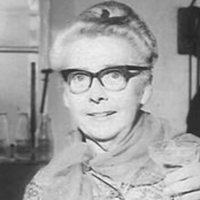
Kathleen Faragher (1904–1974) was the most significant and prolific Manx dialect author of the mid twentieth century. She is best known for her poems first published in the Ramsey Courier and collected into five books published between 1955 and 1967. She was also a prolific short story writer and playwright. Her work is renowned for its humour born of a keen observation of Manx characters, and for its evocative portrayal of the Isle of Man and its people. Life Kathleen Faragher was born in 1904 in Ramsey, Isle of Man, to Joseph and Catherine Anne Faragher, owners of a grocer and provision merchant business on Approach Road. Kathleen was the youngest of five children: Laurence (who died in Gibraltar in 1944 during WWII), Fred (later manager of Martin’s Bank, Peel), Joseph (who took over the family business but died in 1946), Evelyn (who emigrated to Auckland, New Zealand, where she died in 1949) and herself. Kathleen Faragher was raised in Ramsey until about 1924, when she moved to London to take up a business career. After 25 years working in London, ill-health forced her into early retirement, whereupon she returned to live on the Isle of Man in October 1949. Faragher lived first in Ramsey but eventually moved to Maughold, finally coming to live near to the Dhoon Church in Glen Mona. Poetry Faragher’s first poem, 'Blue Point’, was published in the Ramsey Courier on 14 October 1949. The poem was written whilst in Kent and sent to the paper, who surprised Faragher in accepting it, although it was not published until she had returned to live on the island. This poem was different in style to Faragher’s subsequent work and it was only published in her third book of poetry, Where Curlews Call, in 1959, by which time it had been substantially rewritten. Her next poem, 'Maughold Head’, was published at the start of February 1950, after which her poems were published regularly in the Ramsey Courier. Her first published poem in the Anglo-Manx dialect was 'A Lament’, which appeared in September 1950. Her poems were quickly picked up as special evocations of the Isle of Man and they were recited at meetings of Manx Societies in England alongside poems by the Manx National Poet, T. E. Brown, as early as November 1951. Her poems, 'Maughold Head’ and 'In Exile’, were set to music by C. Sydney Marshall and had been cut to record by February 1960. Her first book of poems, Green Hills by the Sea, was published in February 1955 by The Ramsey Courier Ltd. The book’s title is a reference to the popular song, 'Ellan Vannin’, composed from a poem by Eliza Craven Green. The book was described as displaying Faragher’s “deep insight into Manx feelings and a nostalgic love of the old folk and ways” by George Bellairs. The collection opened with 'Land of My Birth’, which she described as “the greatest compliment she can pay to the Manx people” and with which she usually ended her recitals. I love this purple-misted Isle, This land where I was born. The gorse-clad hills and bracken tops, The fields of waving corn. [...] But best of all I love to hear The gentle, lilting voice Of kindly Manx folk greeting me: It makes my heart rejoice, To feel once more the friendly hand, To hear the welcome warm, To look into each smiling face And know I have come home. Her second collection, This Purple-Misted Isle, was published in October 1957. The title was another reference to her forebears of Manx literature, this time to T. E. Brown, a reference continued within the collection with Faragher’s 'The Immortal “Kitty”' paying homage to Brown’s 'Kitty o’ the Sherragh Vane’ from his Fo’c’s’le Yarns. The collection had a Foreword by the Lieutenant Governor, Ambrose Flux Dundas. It proved to be very popular, having to be reprinted by the end of the year, and by the end of 1959 a third print had also almost sold out. This collection included 'The Homecomer’, which displays her distinctive Anglo-Manx conversational style: [...] “It isn’ me dyin’ that I min’, boy,” She said as she sat by her bed; “I’d go peaceful if it wasn’ for thinkin’ Ye’ll be managin’ so maul when I’m dead.” An’ Billy sthroked her cheek– so the tale goes – An’ whispered all lovin’ an’ low, “Dunt be grievin’, Nellie Kate; theer’s no need to gel, To worry about me when yer go! For theer’s the nices’ li’l wumman in Laxaa That I’ve had me eye on this las’ bit; She’ll look after me well, I can tell yer, So take yer res’, Nellie Kate, an’ dunt fret!” My gough! She gorrup from that bed theer Like an arra shot straight from the bow! Ay! an’ Billy himself was years buried ‘Fore herself in the en’ had to go! [...] By 1959 Faragher’s poems had been heard on BBC Radio a number of times, recited both by herself and by others. It was in October of that year that her third collection was released, Where Curlews Call, bearing a perceptive Preface by Sir Ralph Stevenson: “Our mother tongue has been overlaid by a stereotyped accent [...]. The Manx lilt [...] is all too rapidly fading. She does her best in these poems to keep it alive and at the same times gives a warm and human picture of our farms and crofts and the kindly folk who live in them. For this, if for nothing else, she has earned our gratitude.” Her subsequent collections of poetry were These Fairy Shores (1962) and English and Manx Dialect Poems (1967). Faragher’s poems can be predominantly categorised into two types: light-humoured dialect vignettes or lyrical descriptions of the Isle of Man. Her poems are distinctive in Manx literature in being prevailingly from or of a female perspective and based within the family or home environment. Theatre and prose As early as 1951 Faragher had been experimenting with extending her conversational monologue Anglo-Manx poems into theatrical dialogues for performance. In 1964 four such 'character sketches’ were published as Kiare Cooisghyn. As was distinctive of her dialect poetry, all of these pieces were written for middle-aged or elderly female characters and used a very tender humour born of a close observation of Manx character. Something of this is shown in the first 'duologue’ from the collection, 'The Caffy’ in which two women discuss the new café in town: [...] Mrs K. An’ what like was the china? Gran’ mighty I suppose? Mrs C. Aw! somethin’ awful that was! Rale indacent, in fac’. A whole lorra naked childher flyin’ about on the plates shootin’ bows an’ arras. Mrs K. Aw! them 'ud be l’il Cupids. Mrs C. Li’l Cupids? Li’l divils, more like! Why wan o’ them was the dead spit o’ that young dirt Kermid’s yandher! Ay! skeetin’ up at me through the gravy he was– enough to turn yer! [...] She came to concentrate on prose towards the end of her life, publishing By The Red Fuchsia Tree in 1967, a collection of short stories interspersed with reprints of poems from her earlier collections. This was followed by a long series of short dialect stories published under the pseudonym, “Kirree Ann”, in the Ramsey Courier at a rate of almost one a week over the last two years of her life. This output of nearly 100 short stories makes her the most prolific Manx short story writer of the twentieth Century. Death and legacy Kathleen Faragher died in 1974, on the same day as her final story was published in the Ramsey Courier. She was buried in the family plot in Maughold churchyard, a graveyard also associated with other important Manx writers such as T. E. Brown, Hall Caine, Cushag and William Kennish. Six years after her death, her friend, Constance Radcliffe, the leading authority on the local history of Ramsey and Maughold, wrote of Faragher’s work that: “In all her works she expressed her affection for a Manx way of life which has only just disappeared, her kindly humour based on acute observation of people’s idiosyncrasies, and her deep and abiding love of the island itself.” Her work continues to be popularly performed in recitals on the Isle of Man, despite none of her books having been republished after her death, and her “Kirree Ann” stories having never been collected. In 2015 a project to record the memories of those who knew and remember Faragher was launched. Funded by Culture Vannin, it is envisioned to tie in with the Culture Vannin oral history programme, but also to reach more widely to collect unpublished works, memorabilia or other artefacts that might be uncovered. In introducing the initiative, the project organiser gave an estimation of Faragher’s work in relation to Manx literature: “the importance of her work to the Isle of Man would be hard to overestimate. It would be a tragedy for Manx culture if we did not do everything in our power to preserve all we can of her memory.” Publications * Green Hills by the Sea. Ramsey: The Ramsey Courier Ltd. 1954. * This Purple-Misted Isle. Ramsey: The Ramsey Courier Ltd. 1957. * Where Curlews Call. Ramsey: The Ramsey Courier Ltd. 1959. * These Fairy Shores. Ramsey: The Ramsey Courier Ltd. 1962. * Kiare Cooisghyn. Ramsey: The Ramsey Courier Ltd. 1964. * English and Manx Dialect Poems. Douglas: Norris Modern Press. 1967. * By The Red Fuchsia Tree. Douglas: The Norris Modern Press. 1967. References Wikipedia—https://en.wikipedia.org/wiki/Kathleen_Faragher


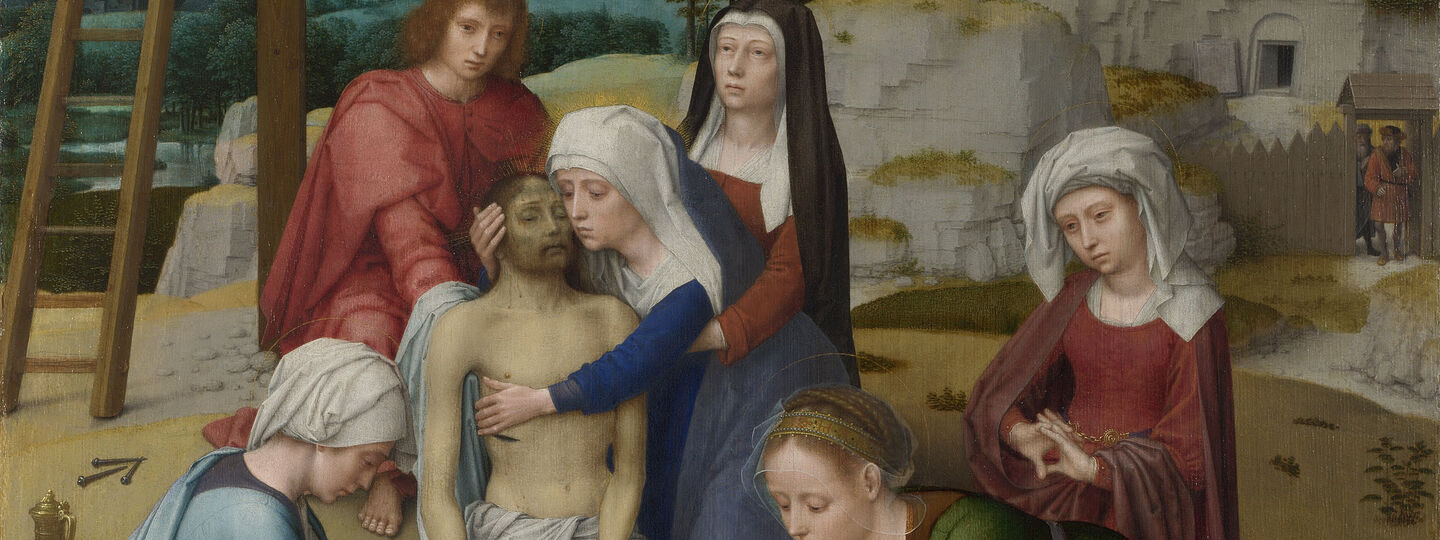
.jpg)
